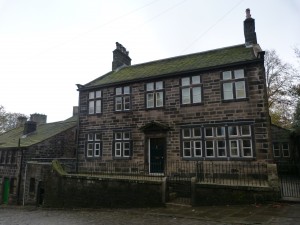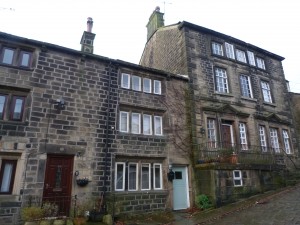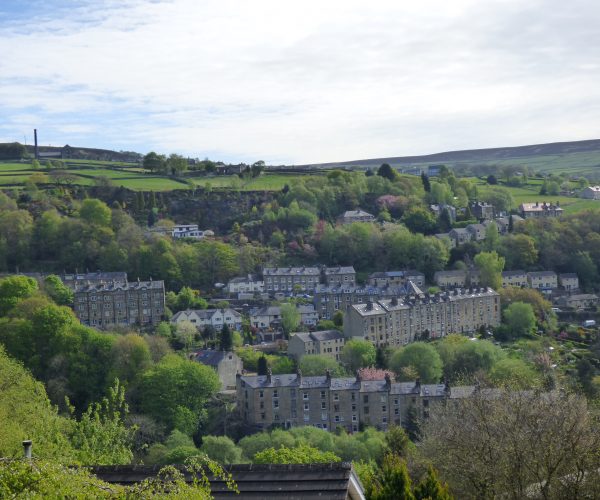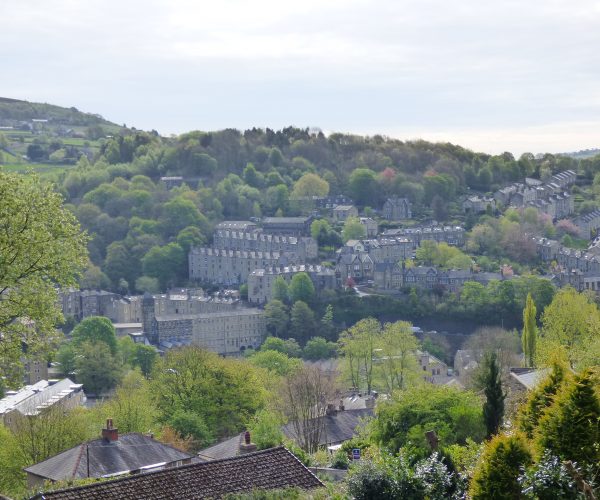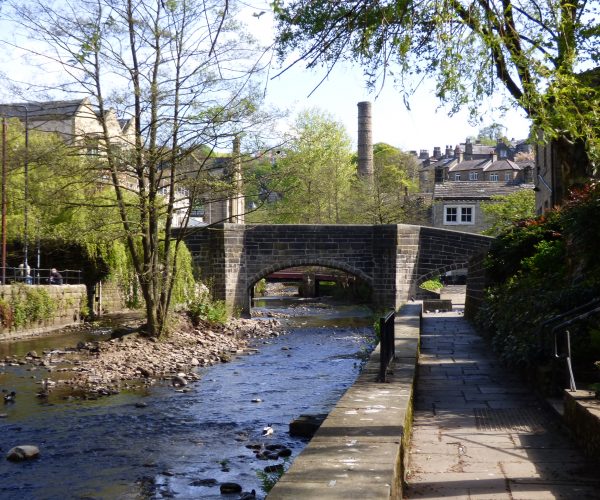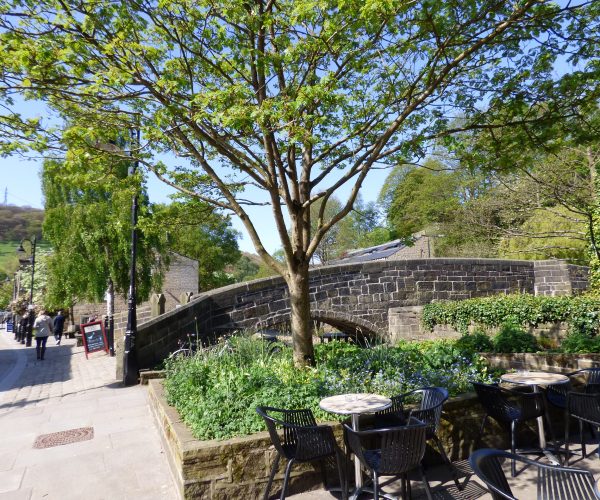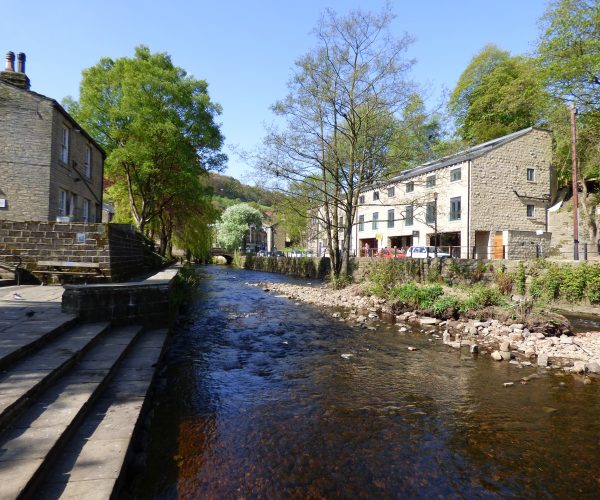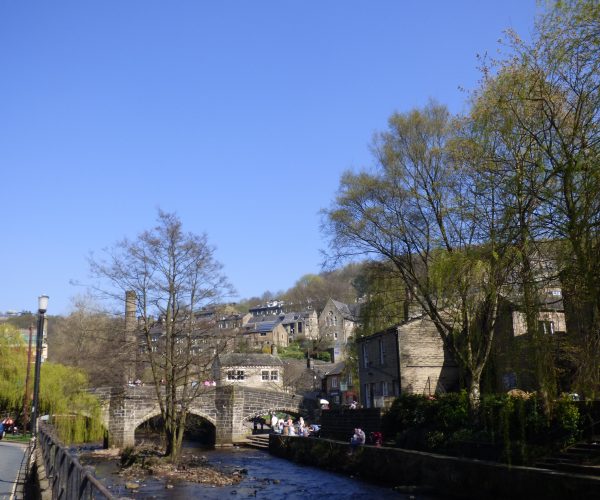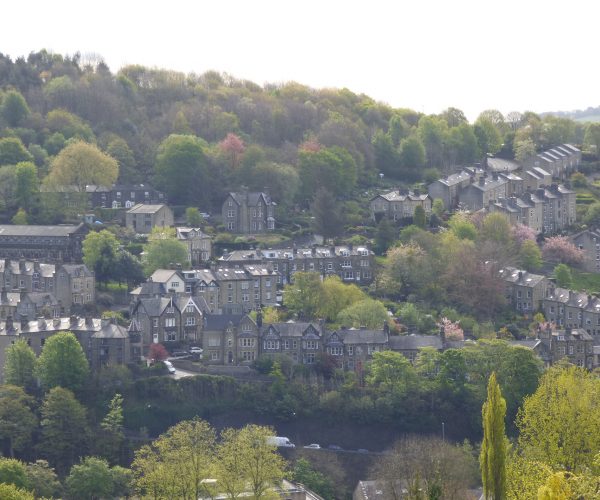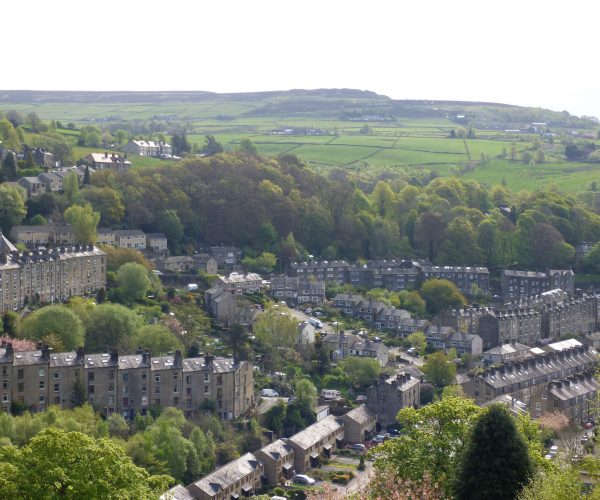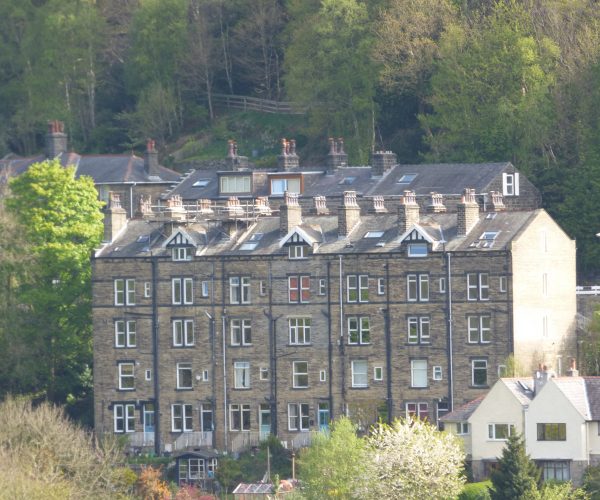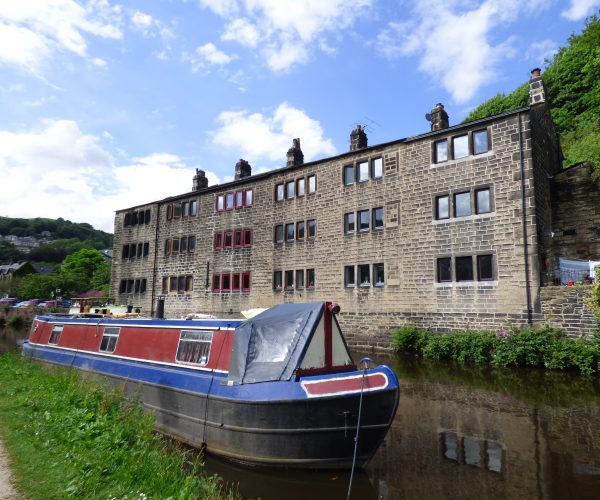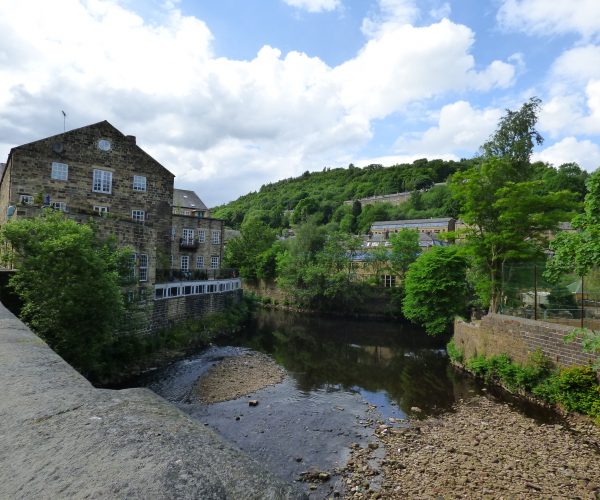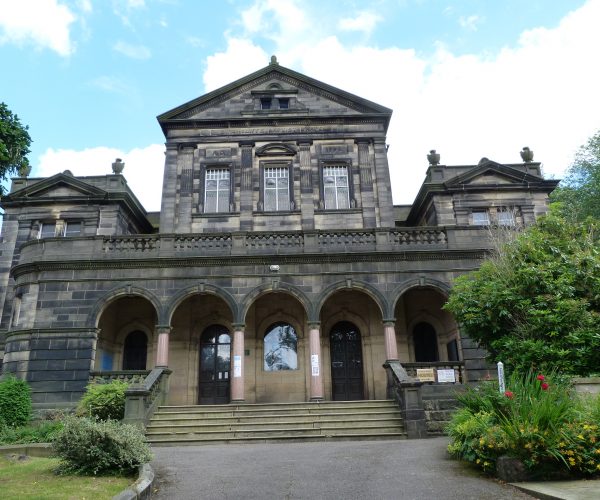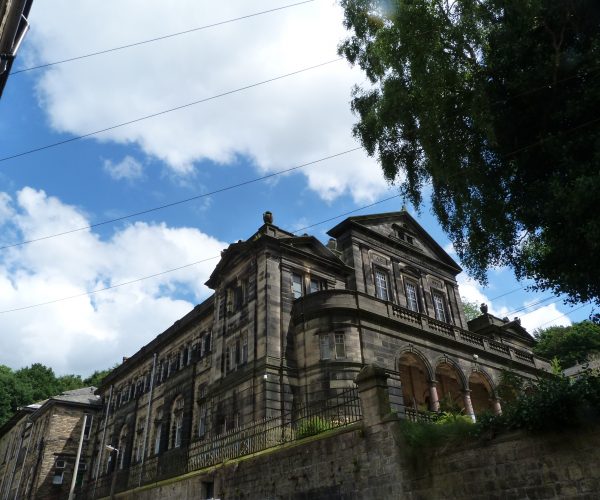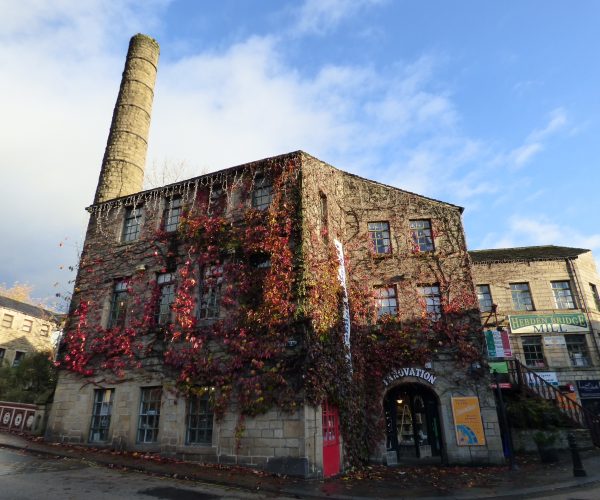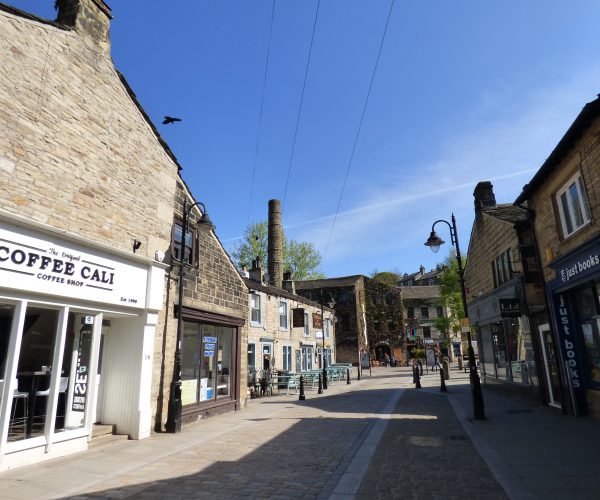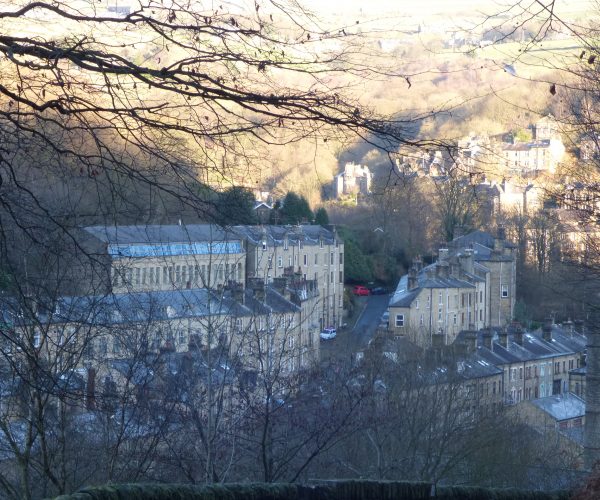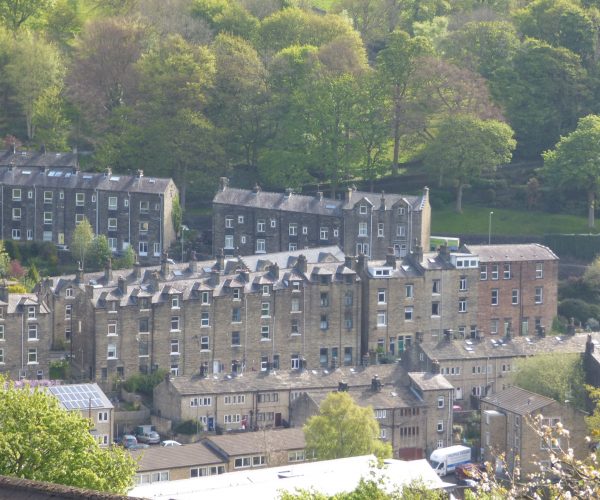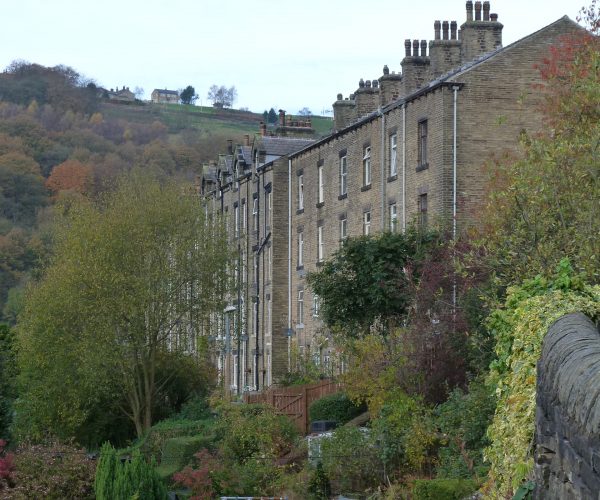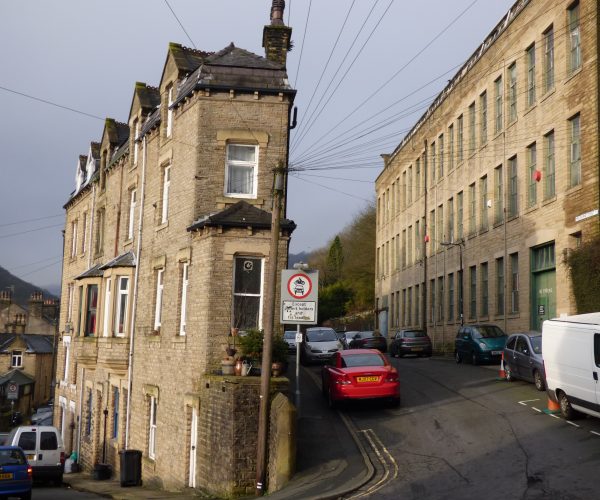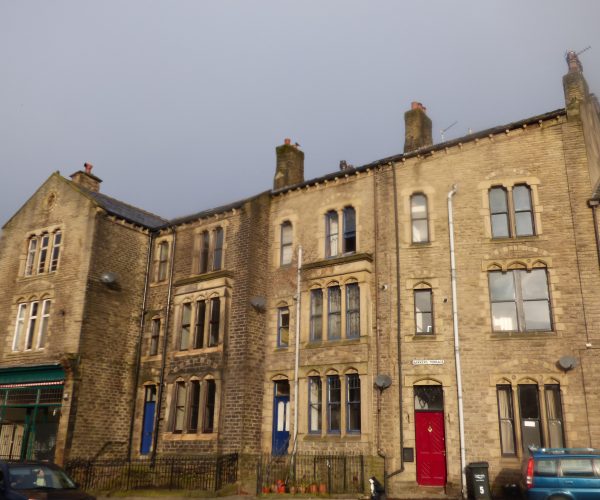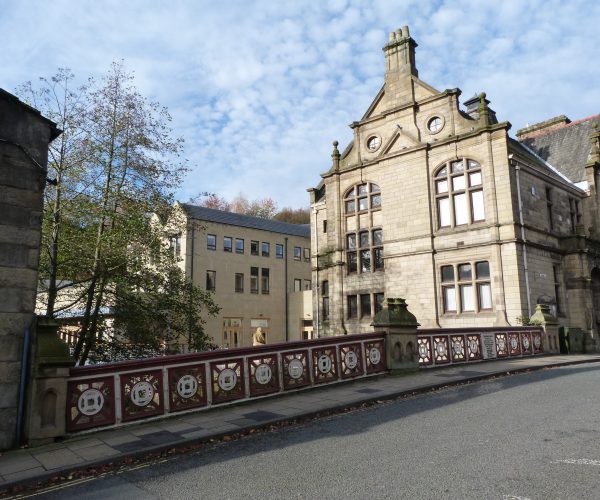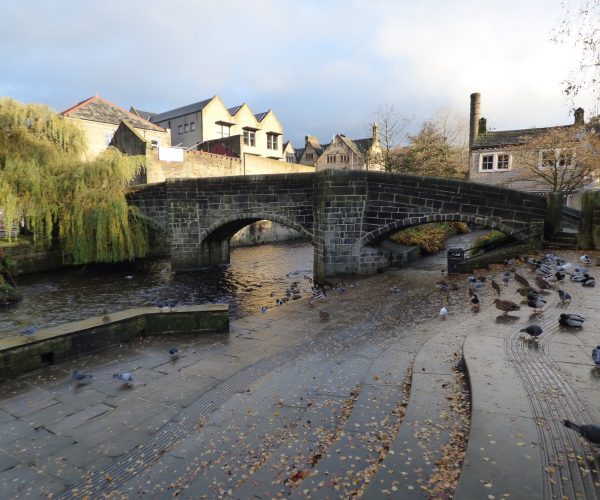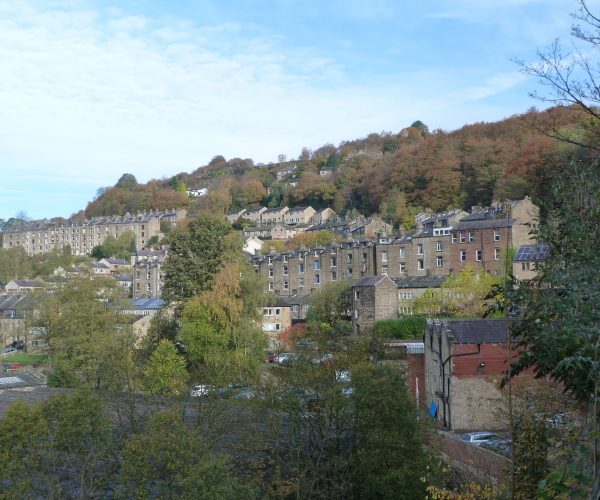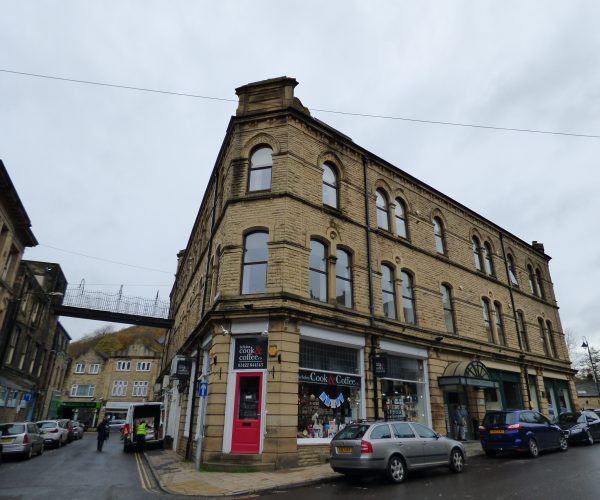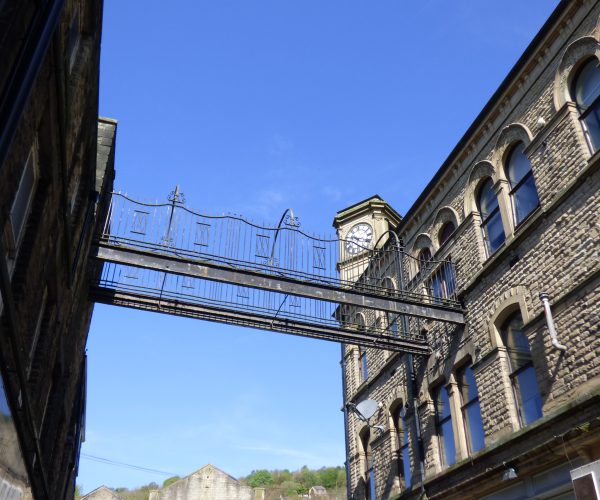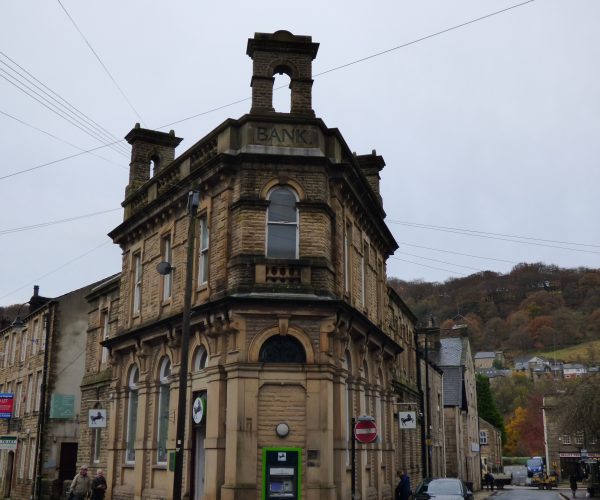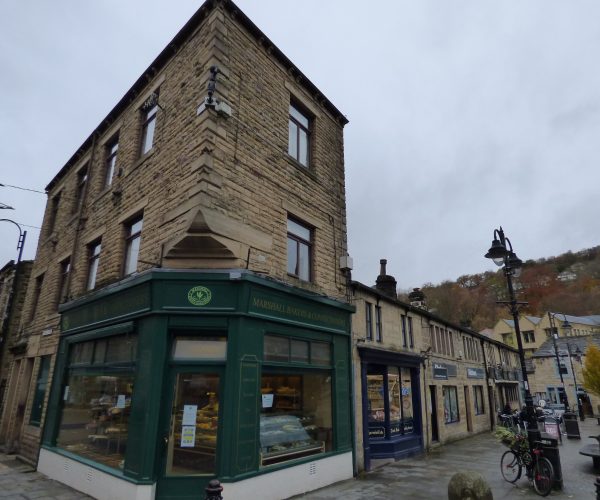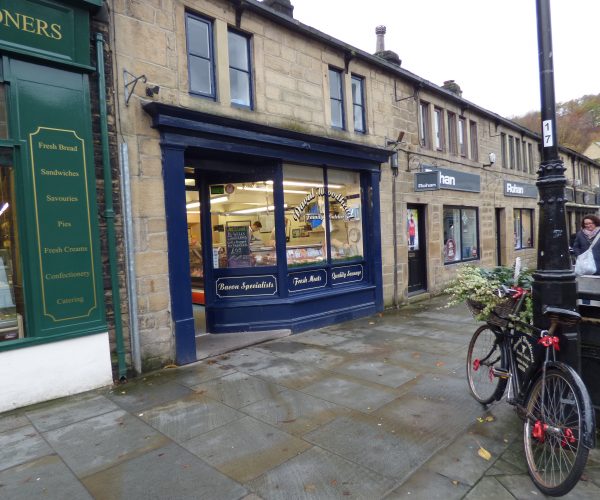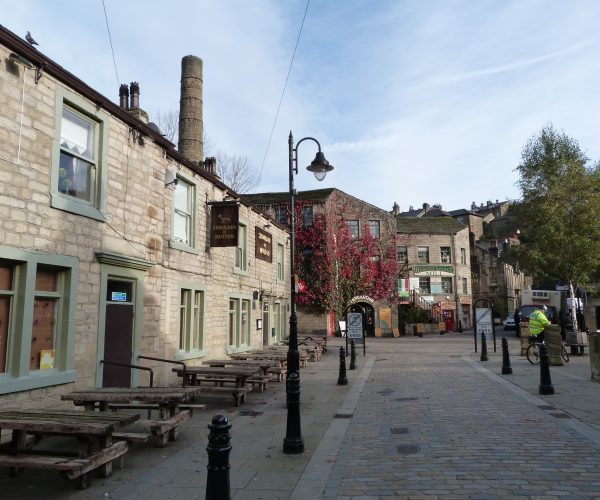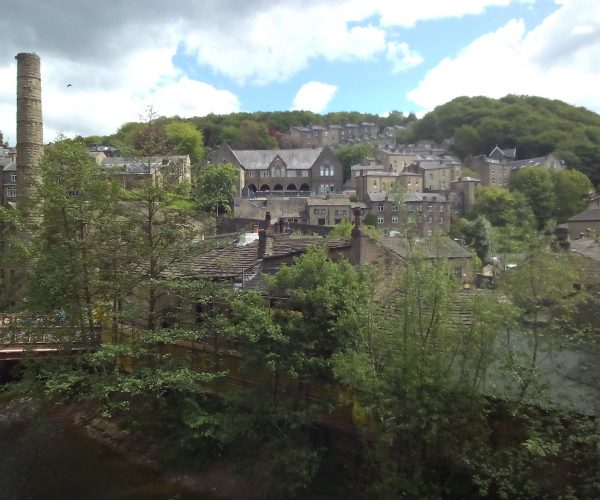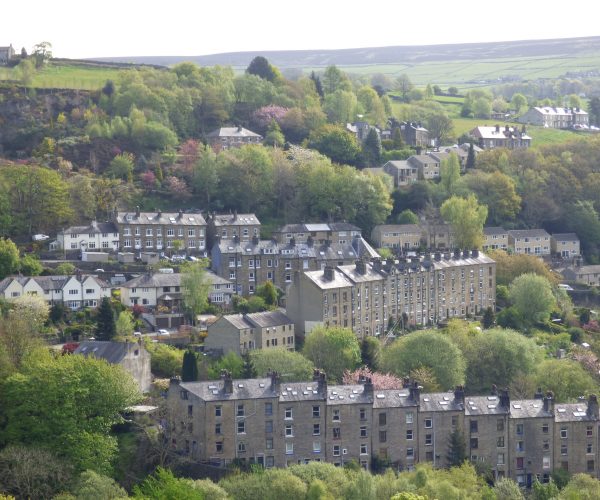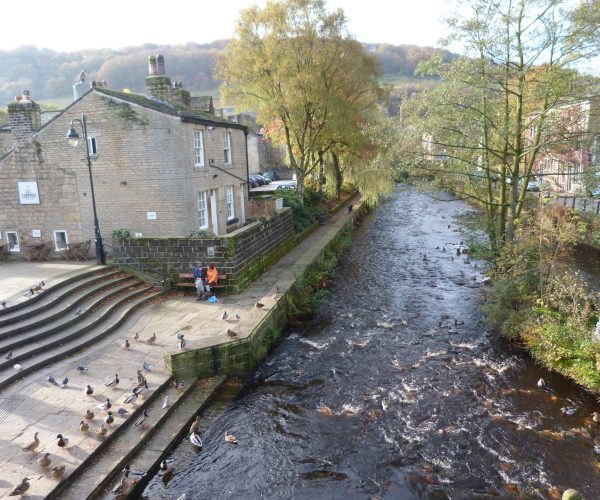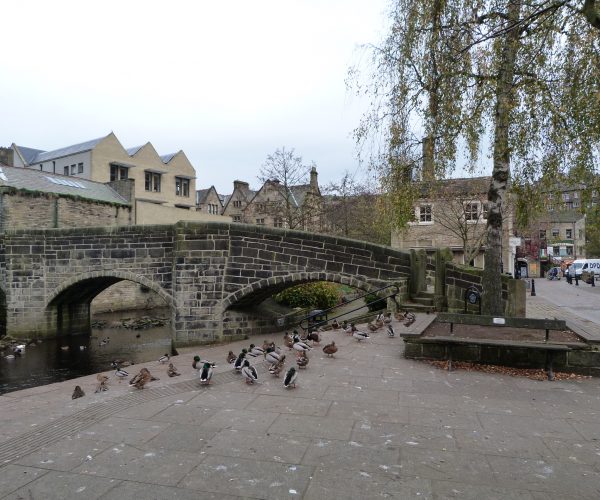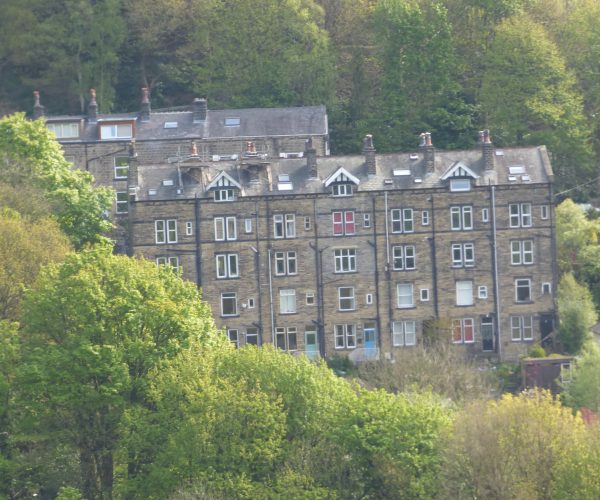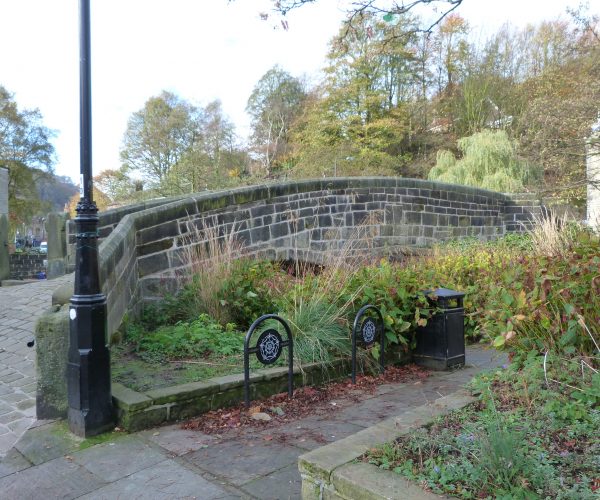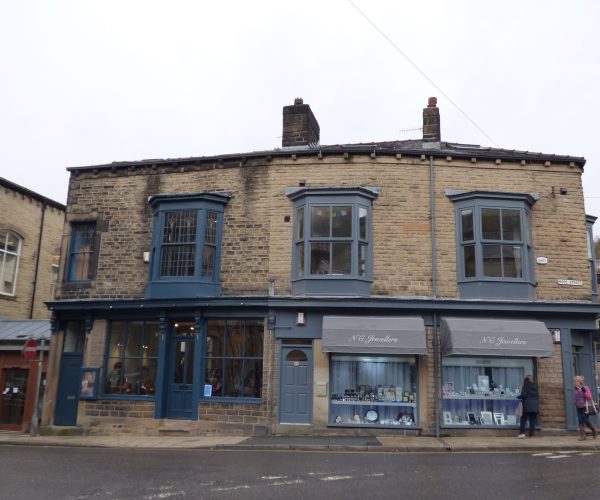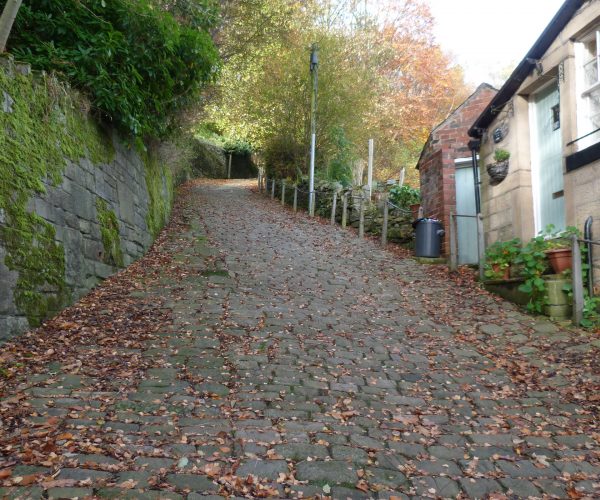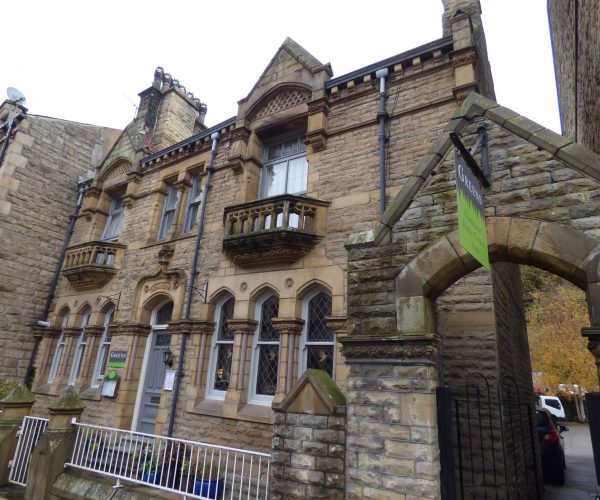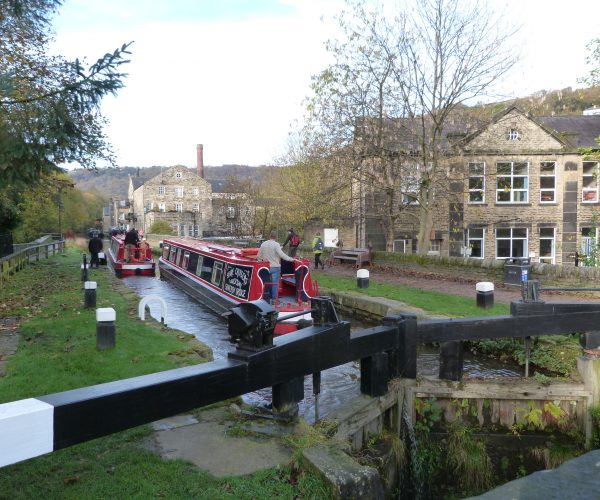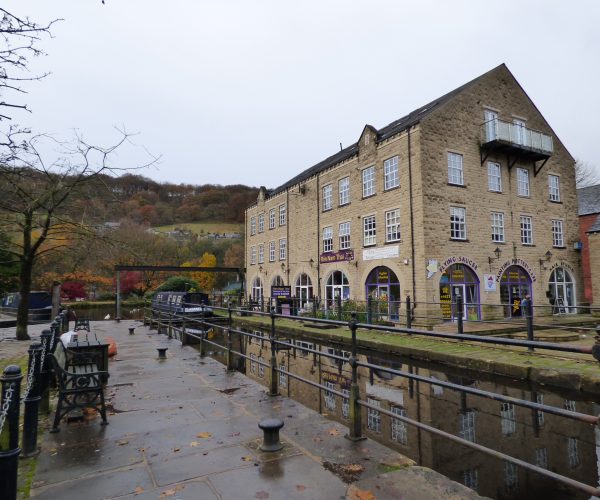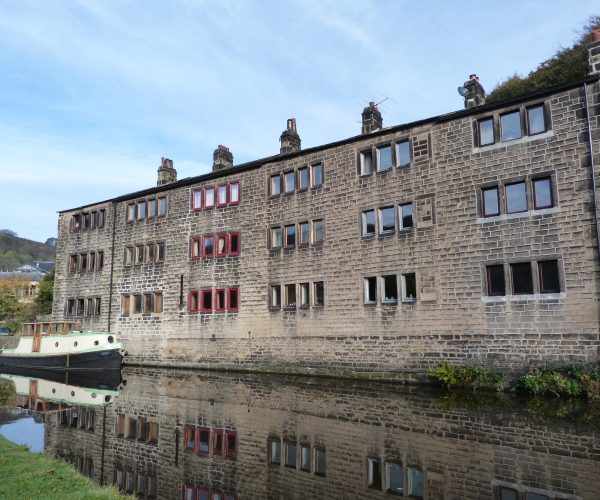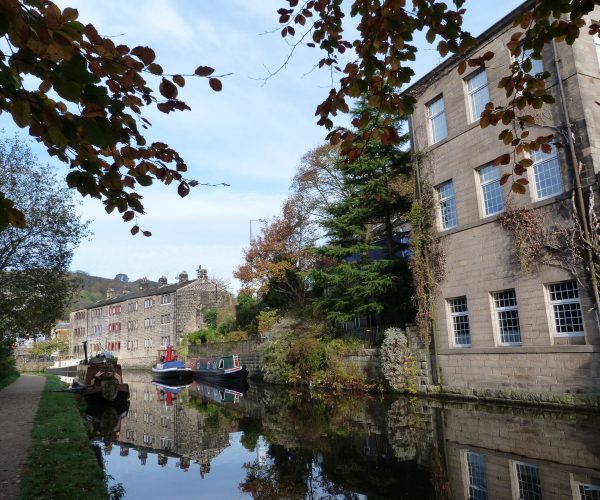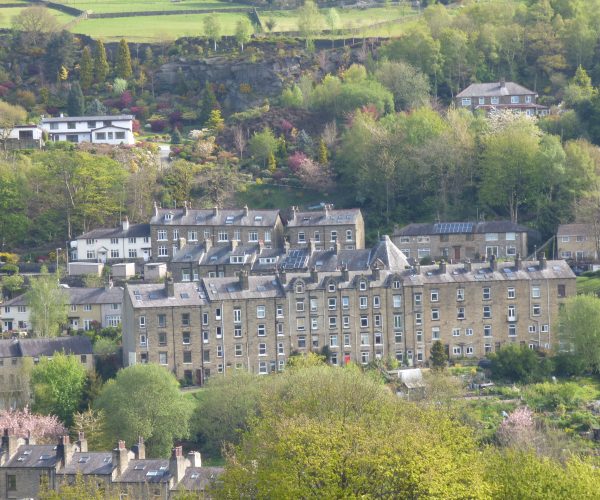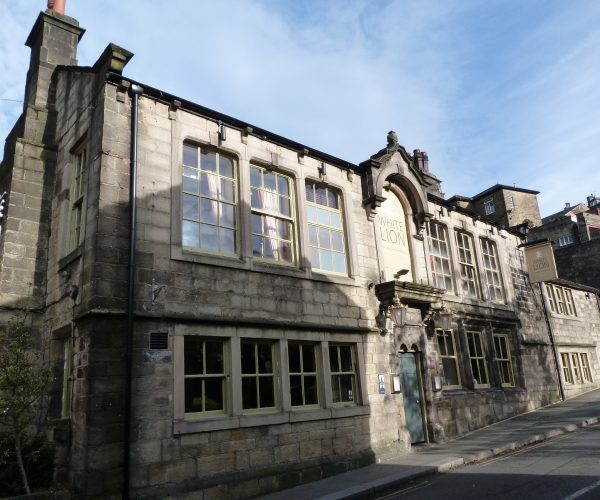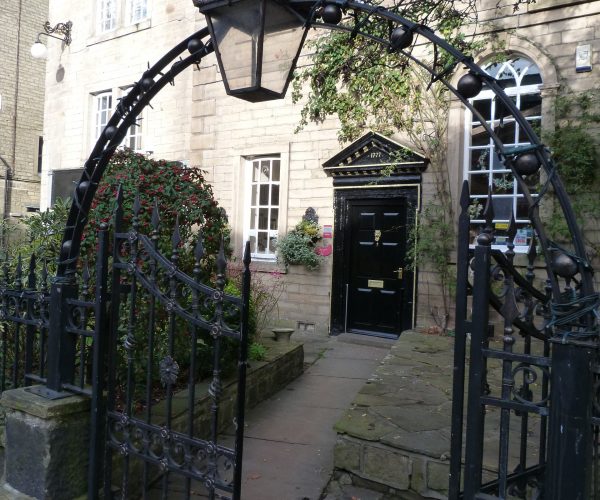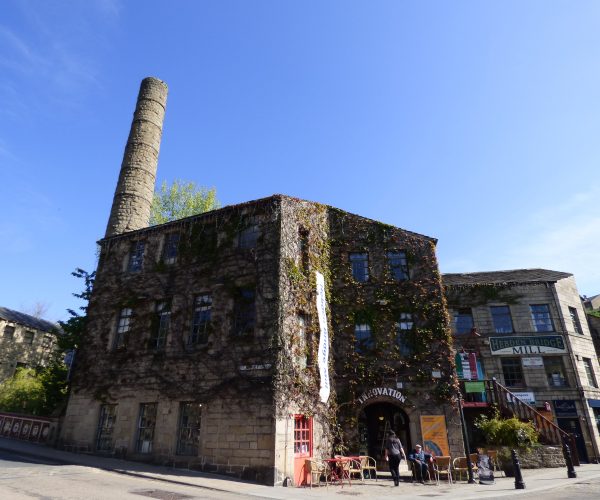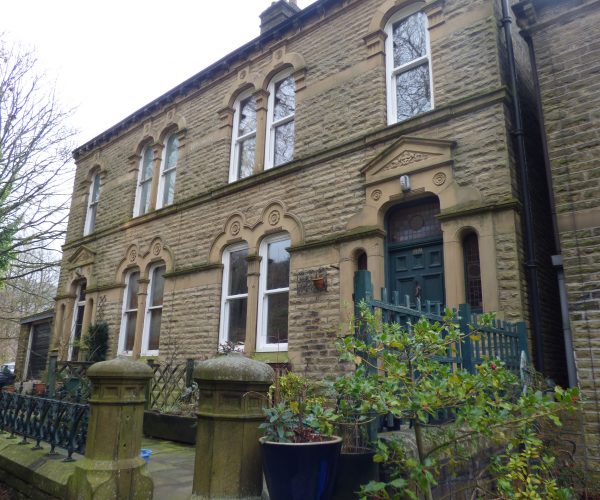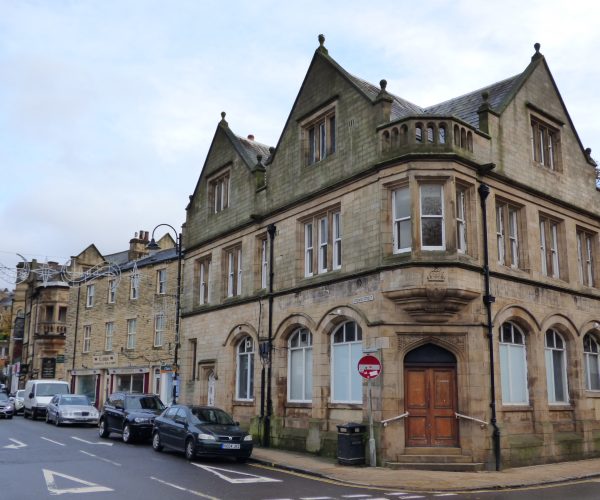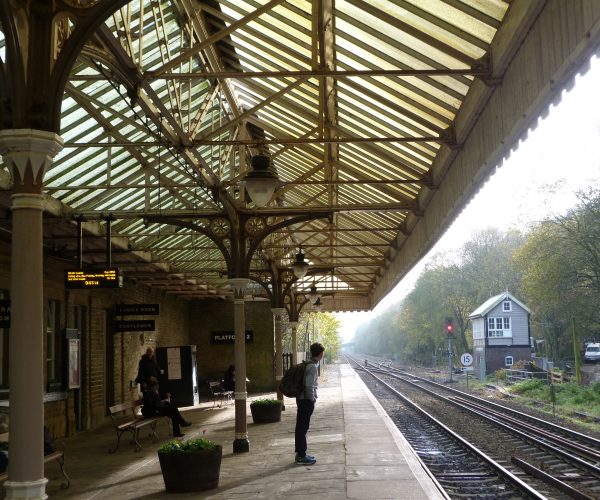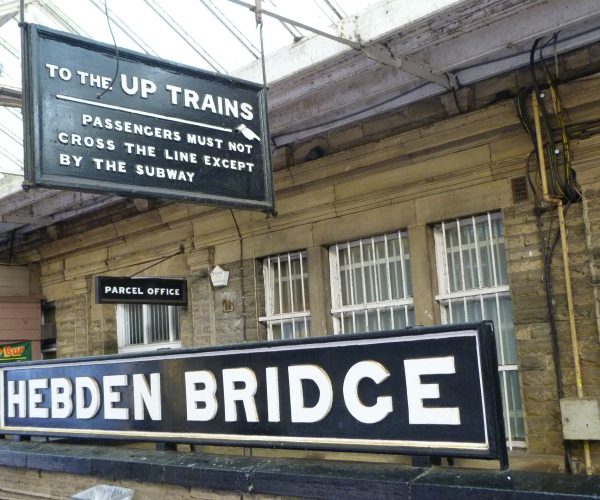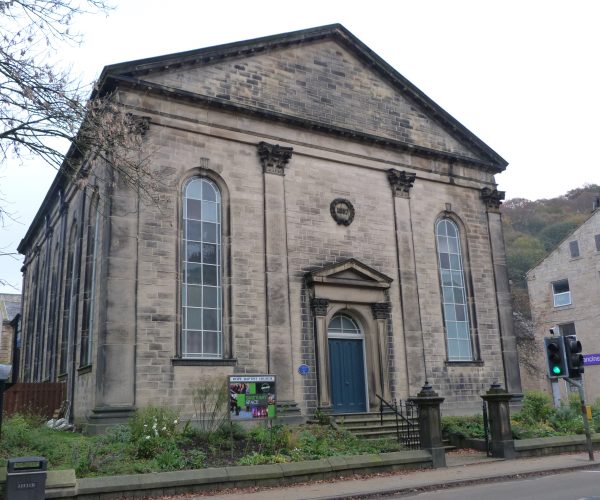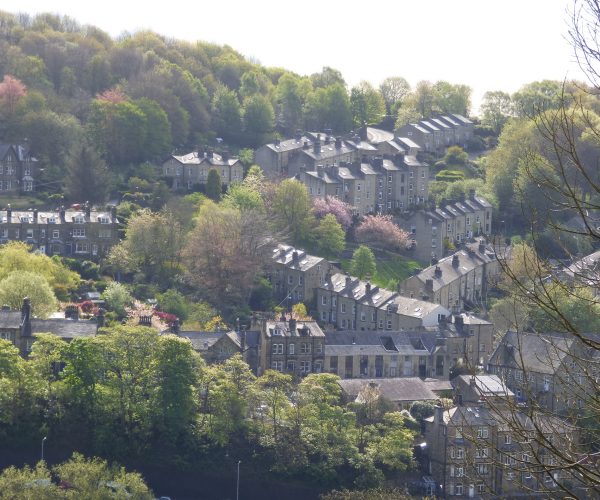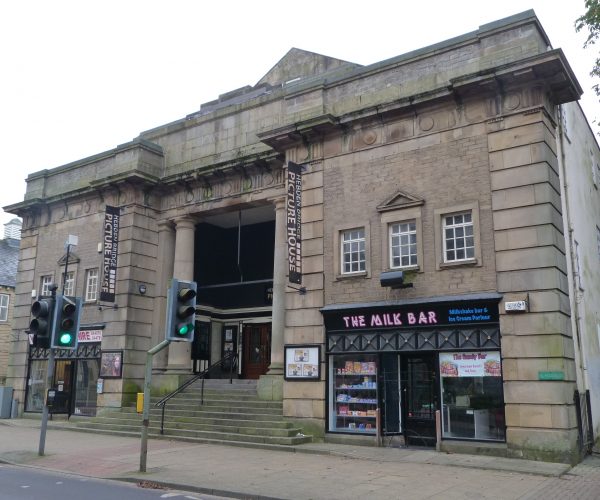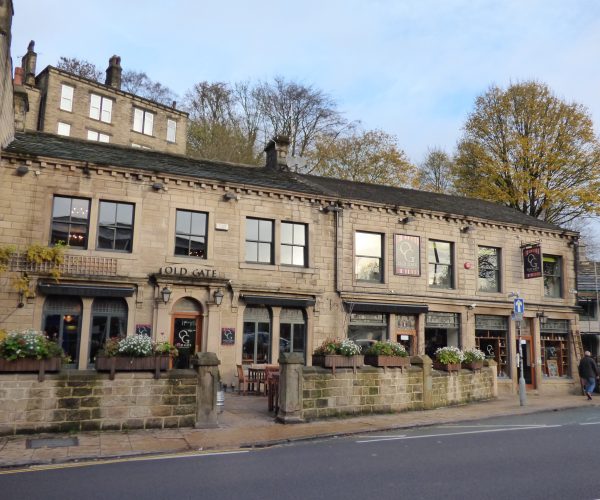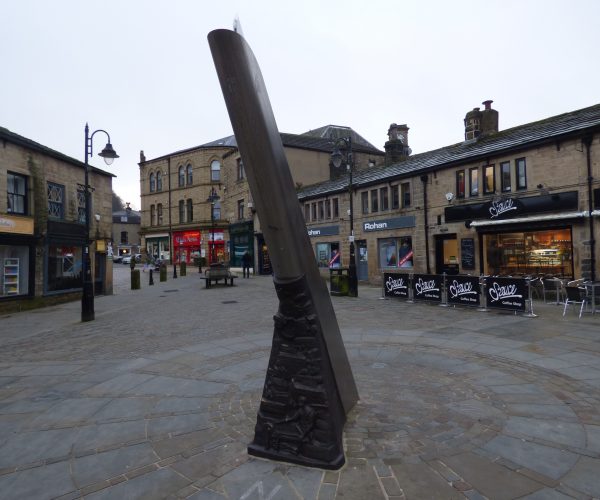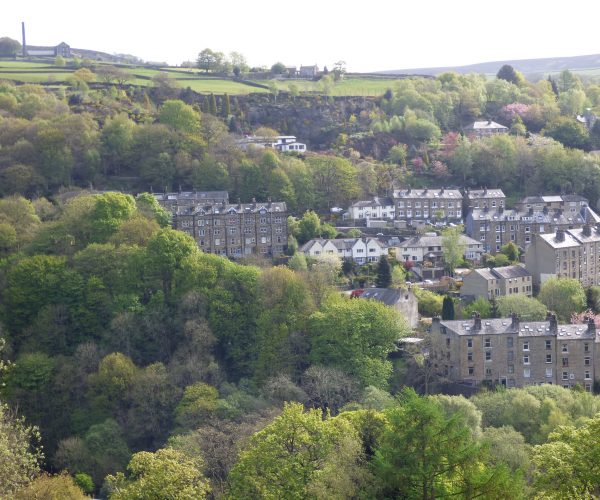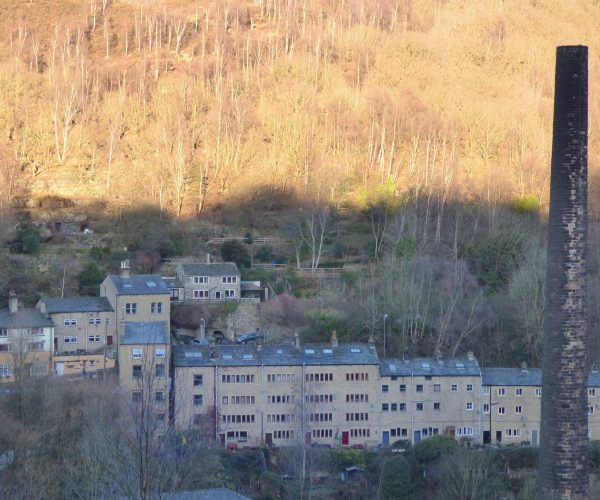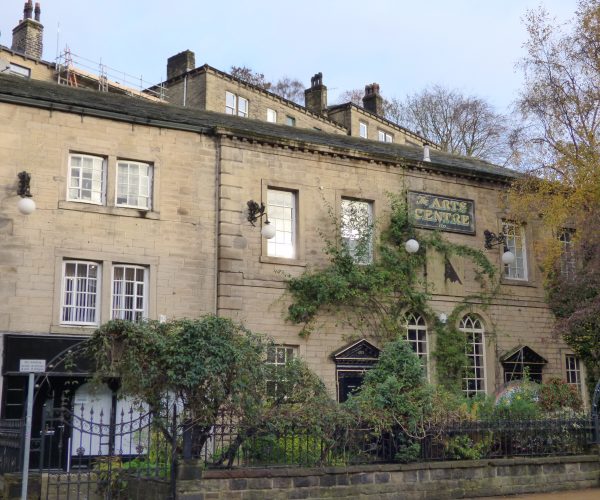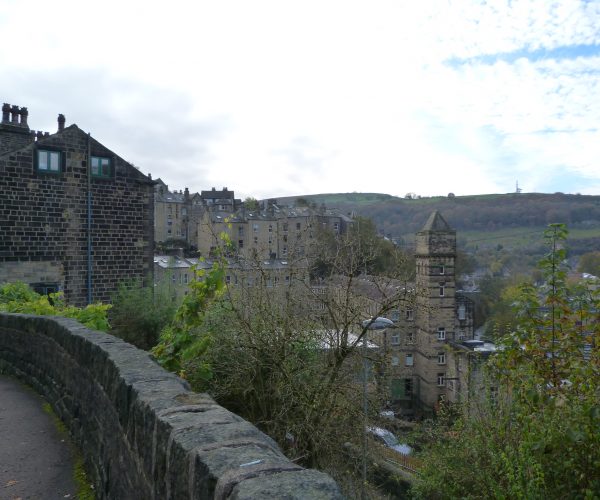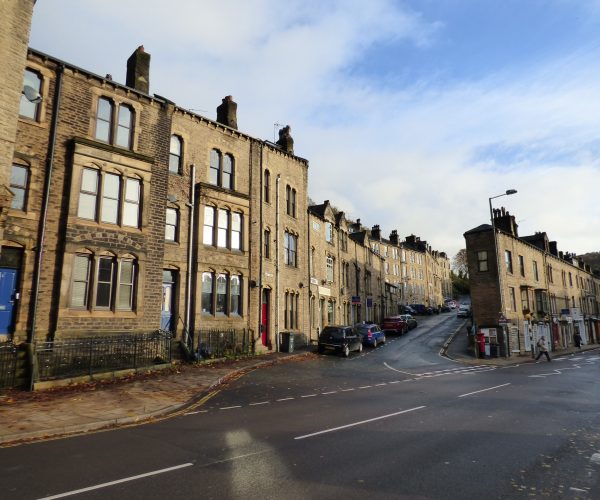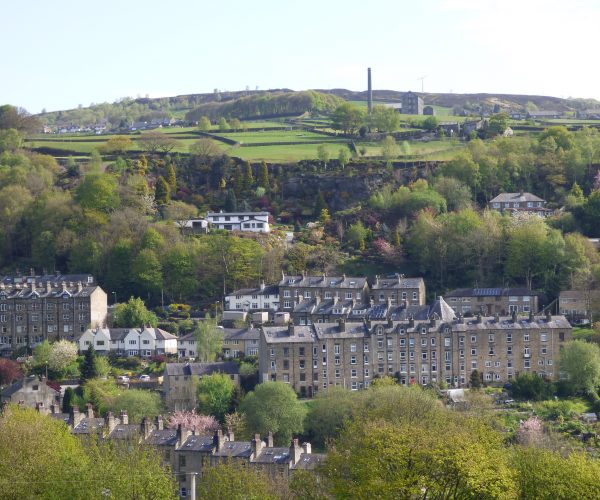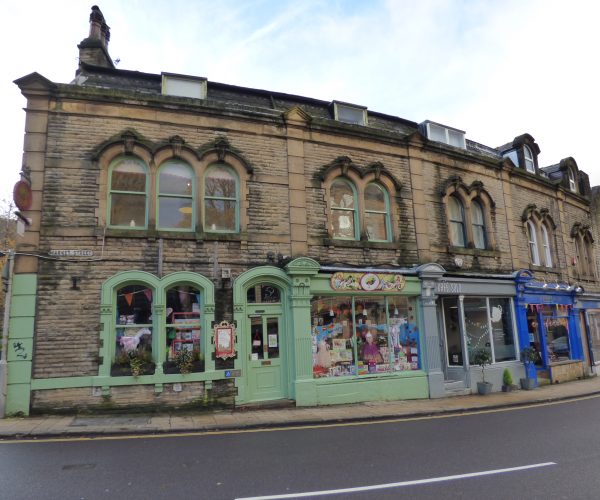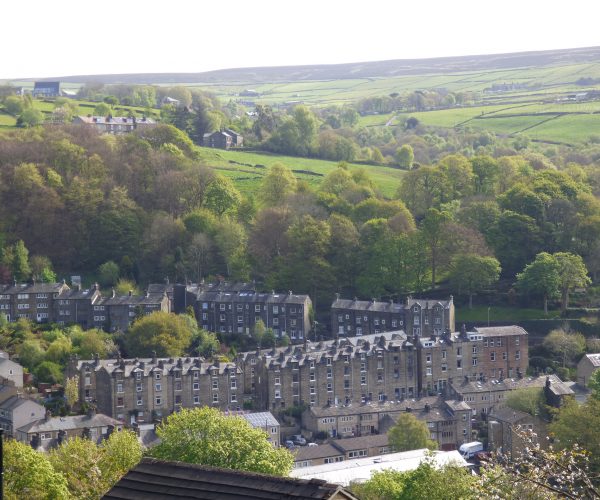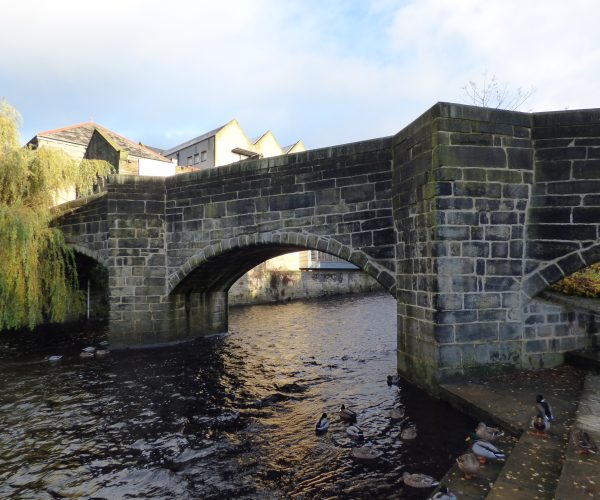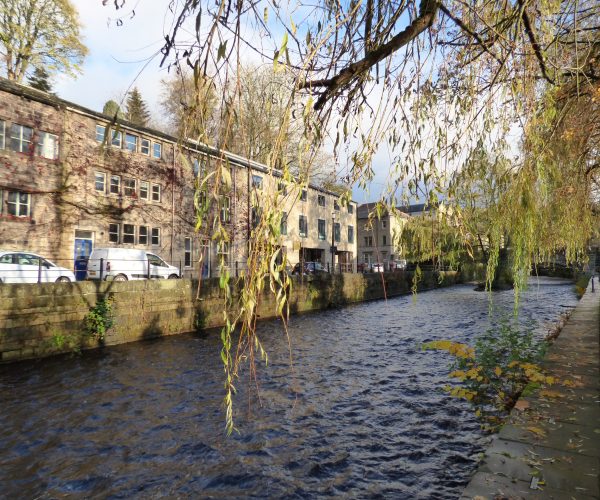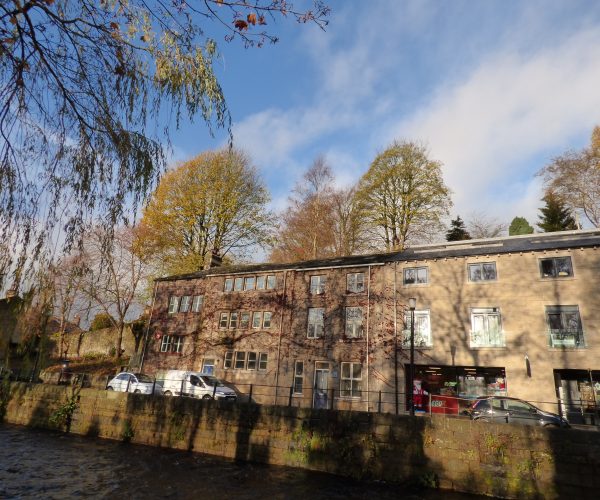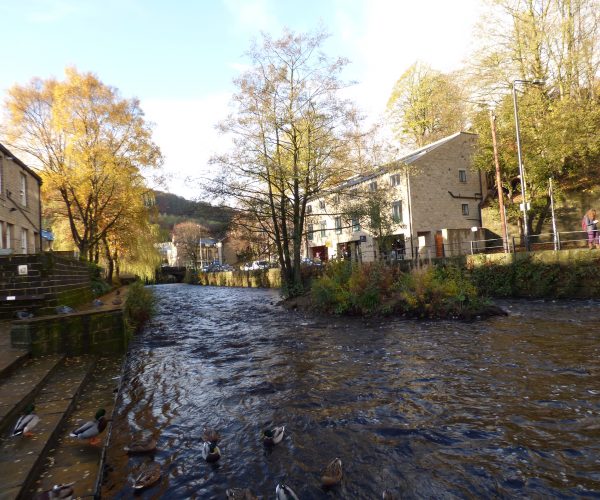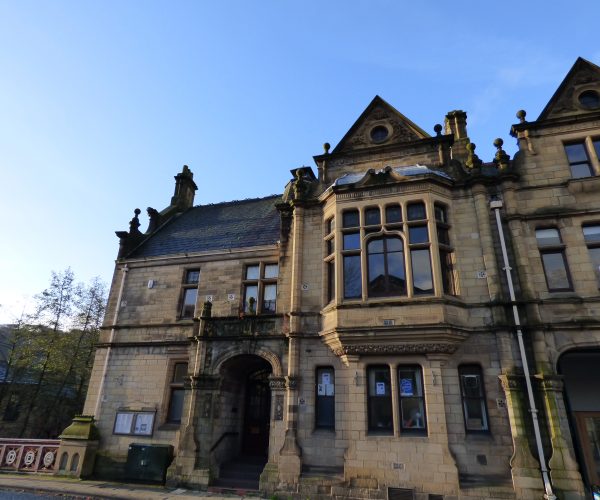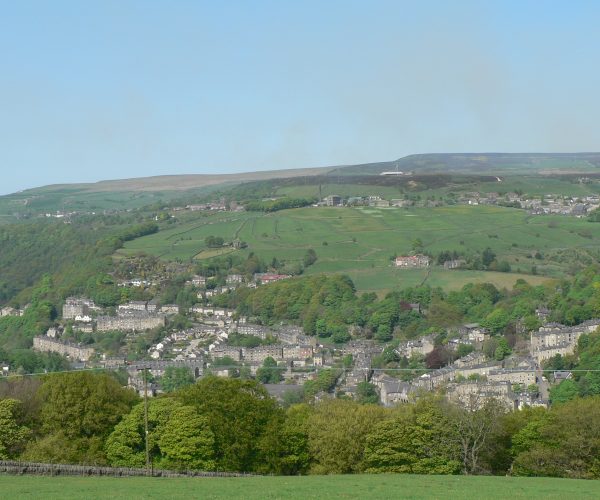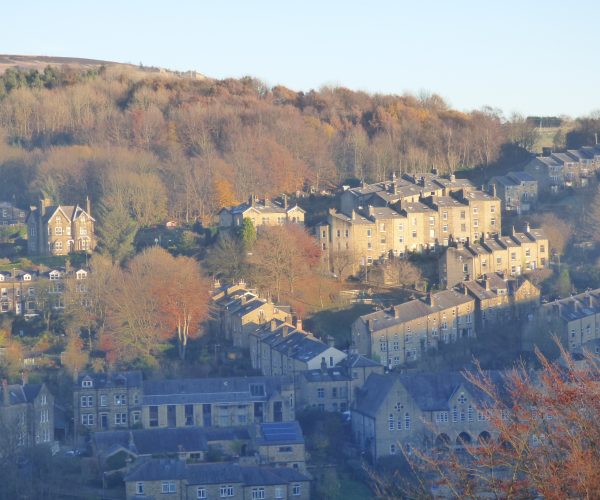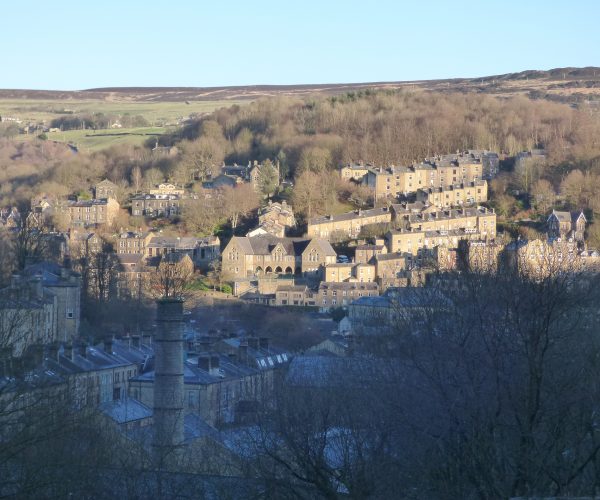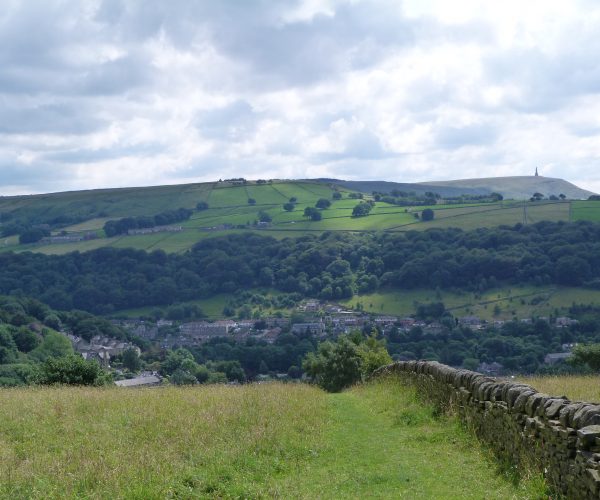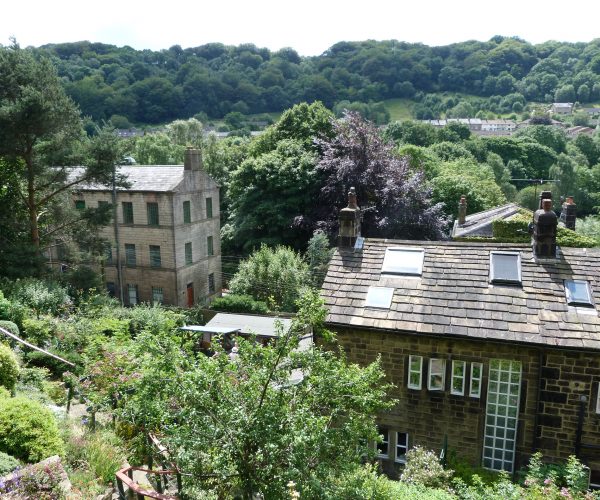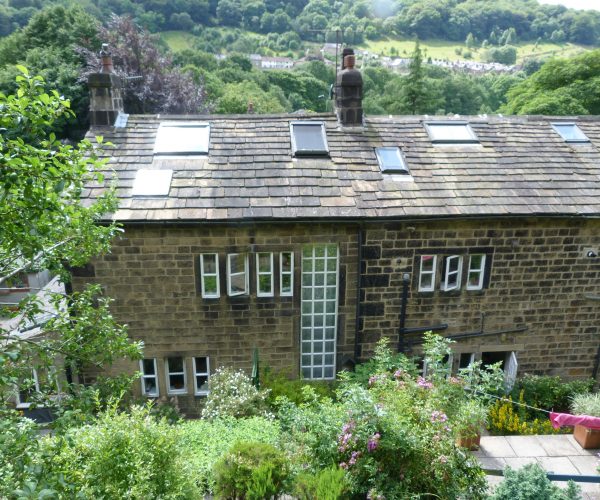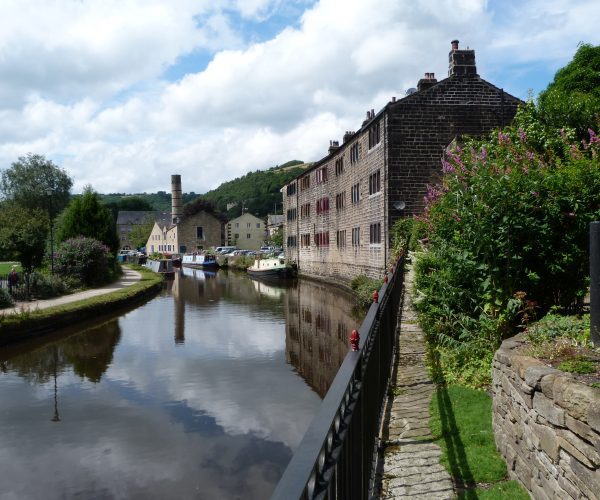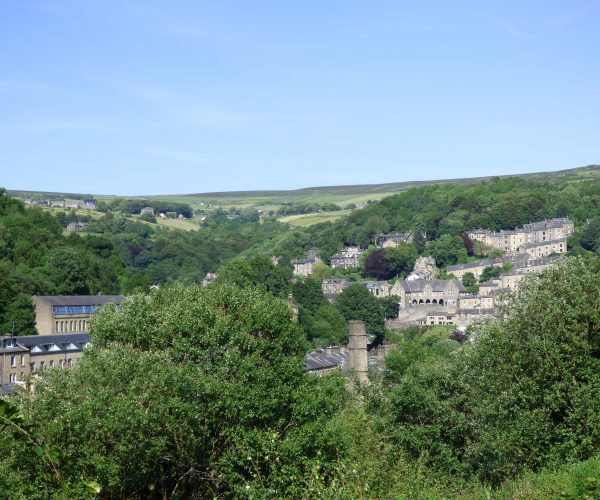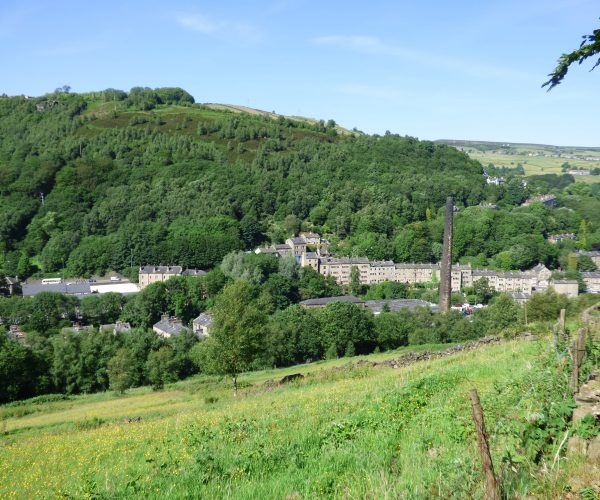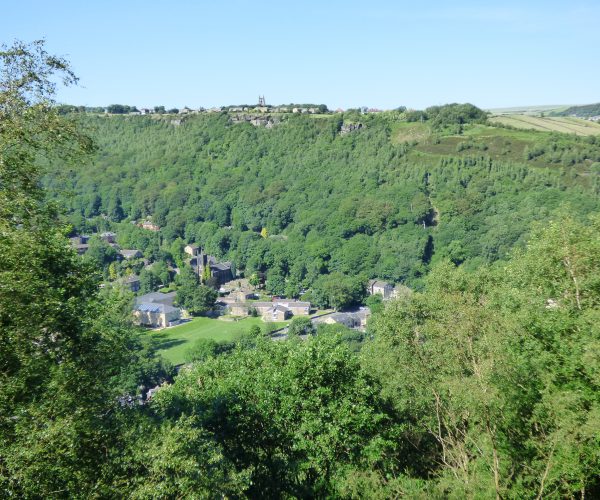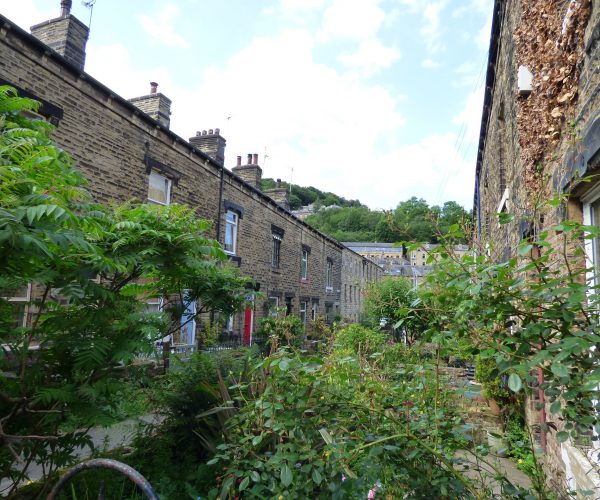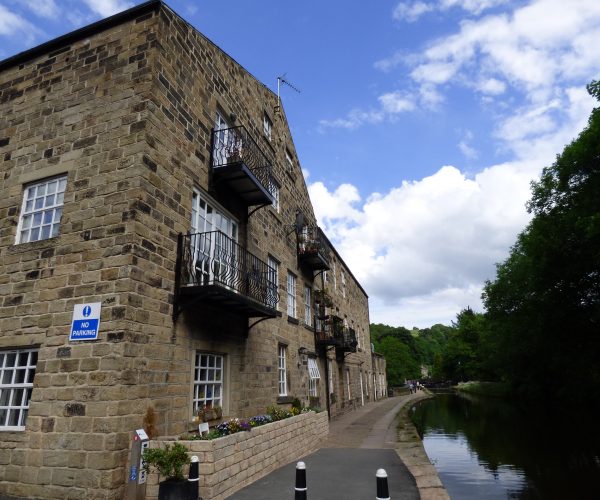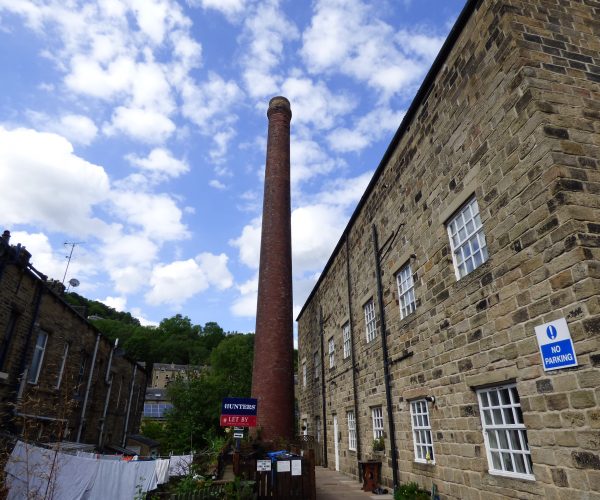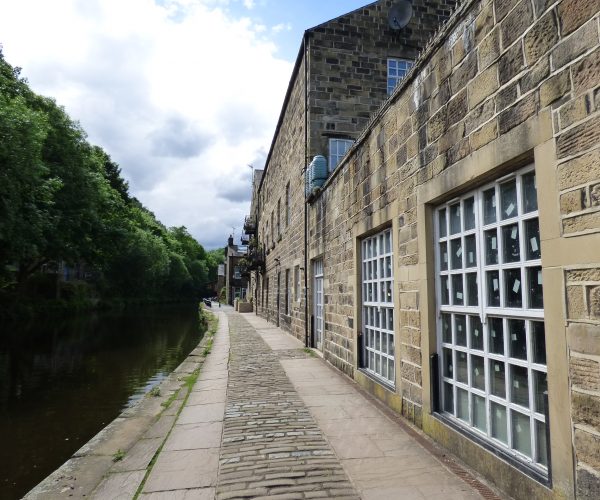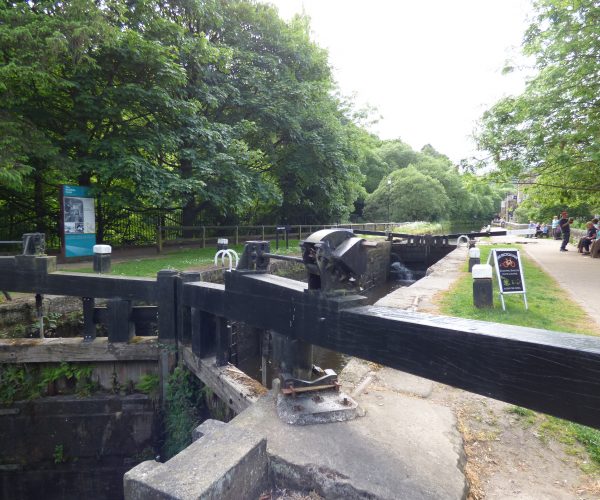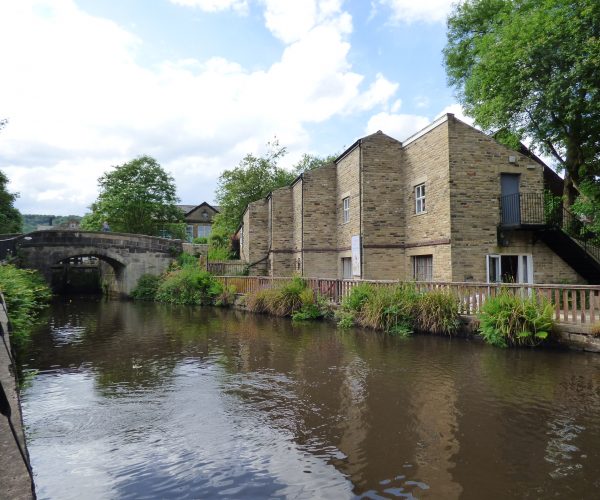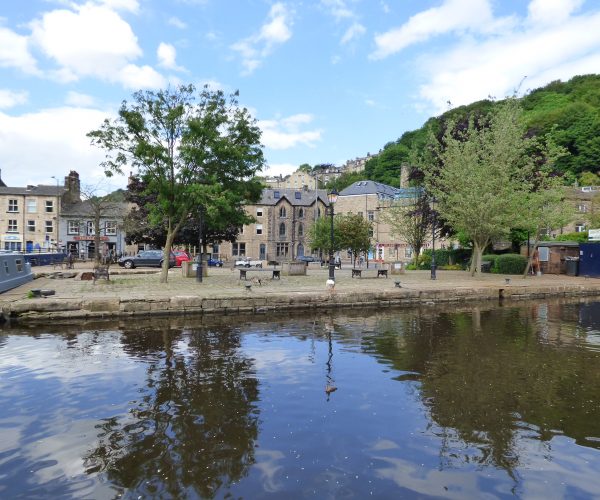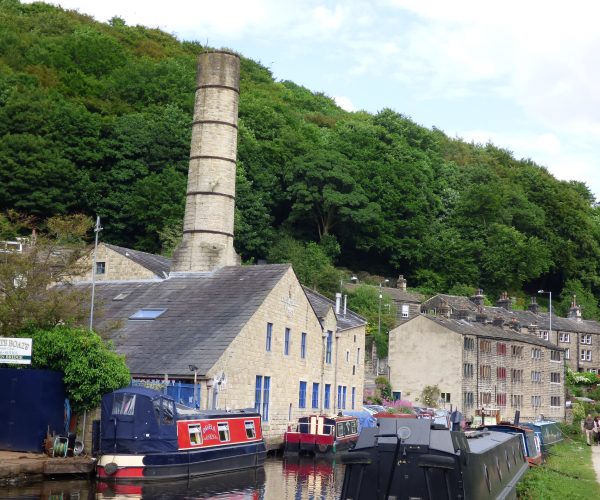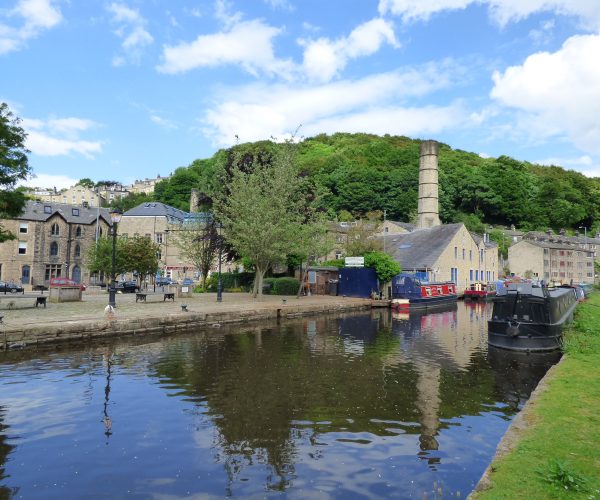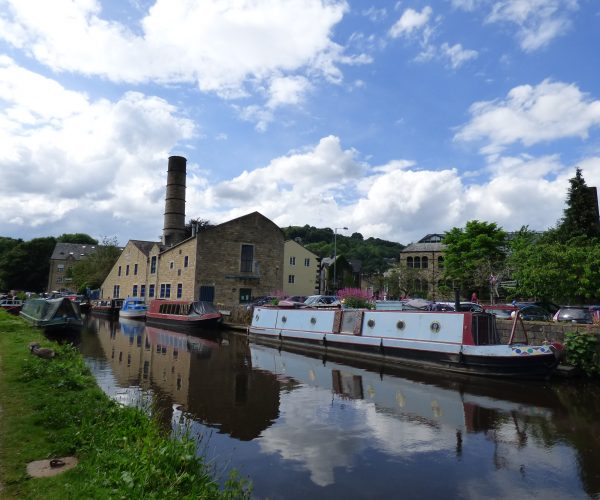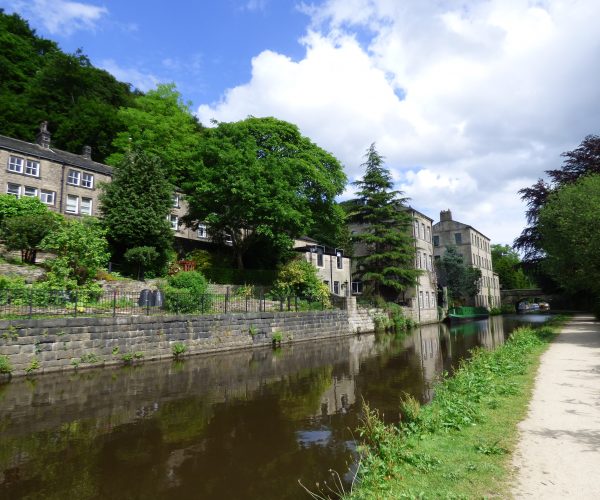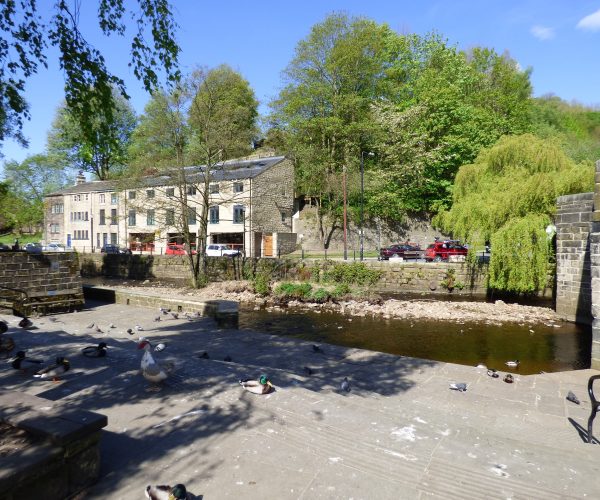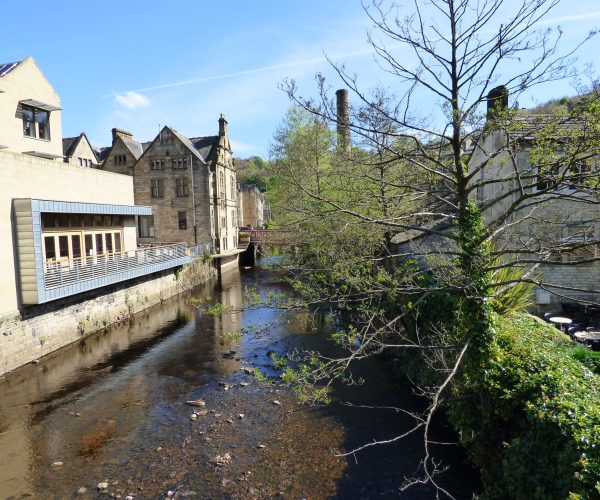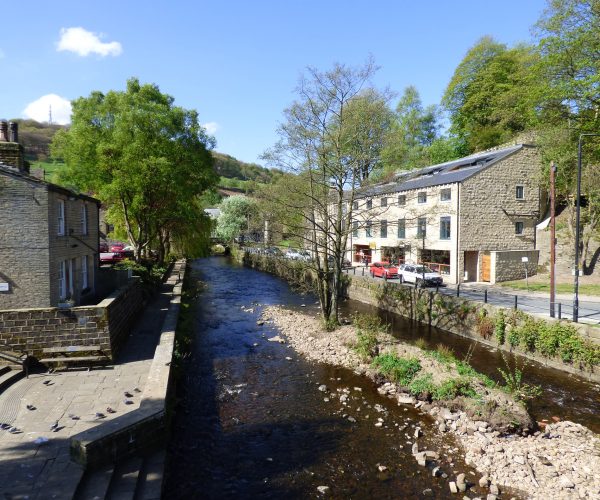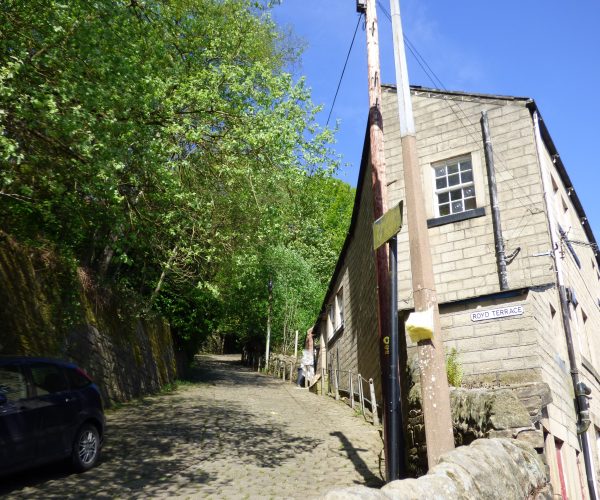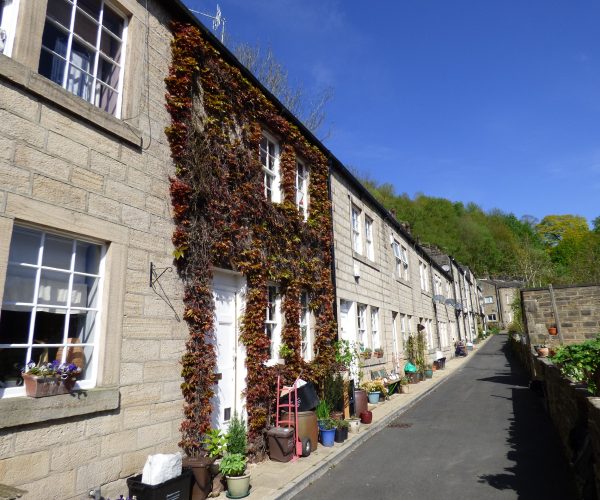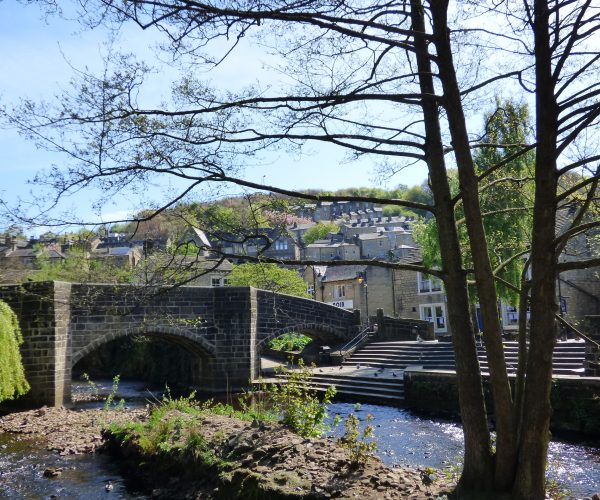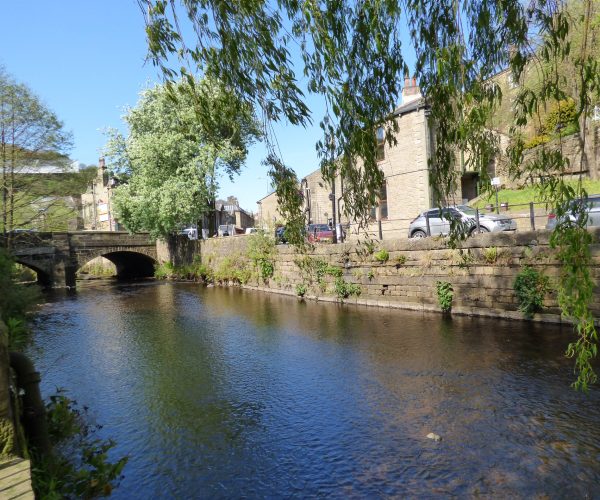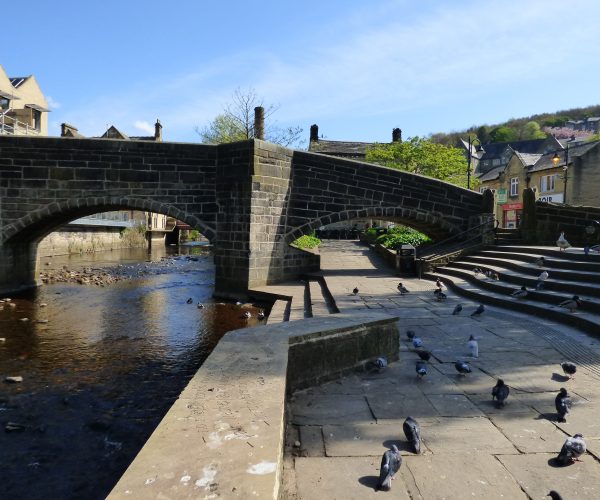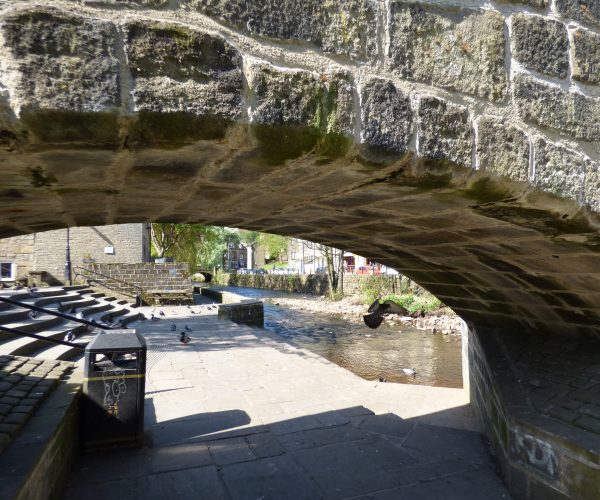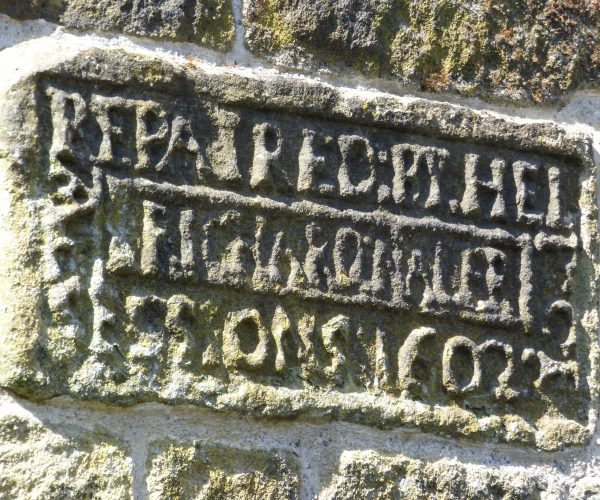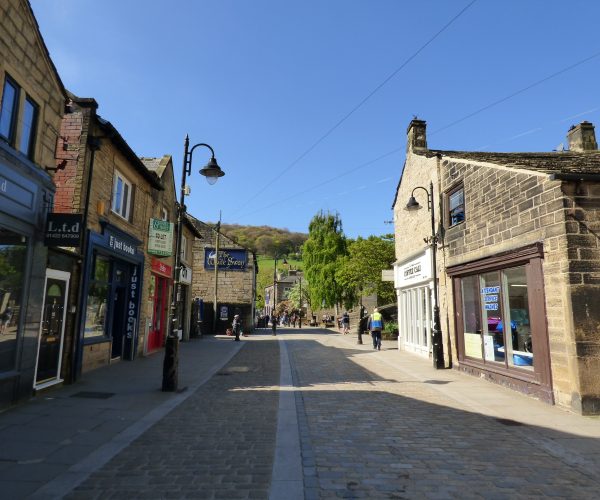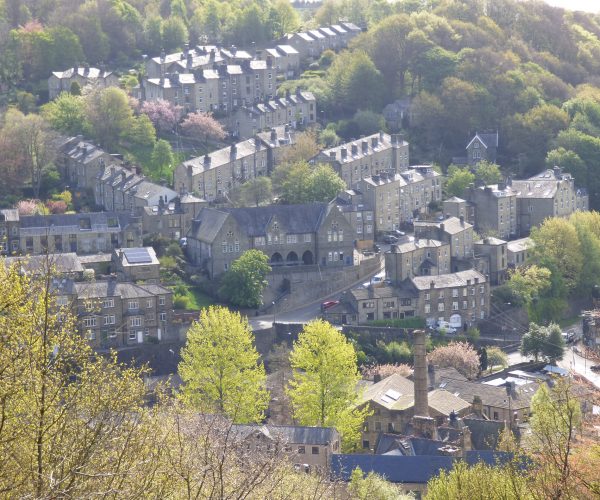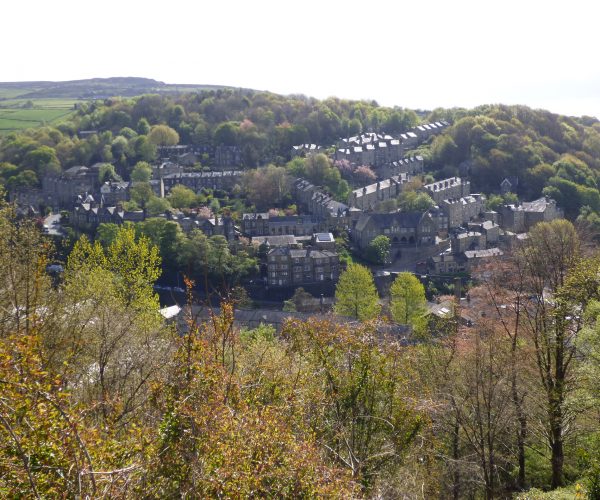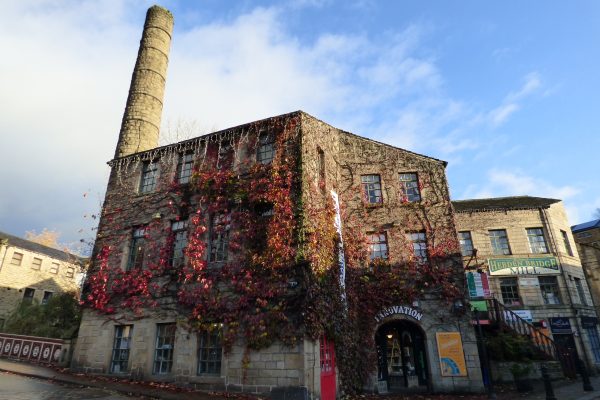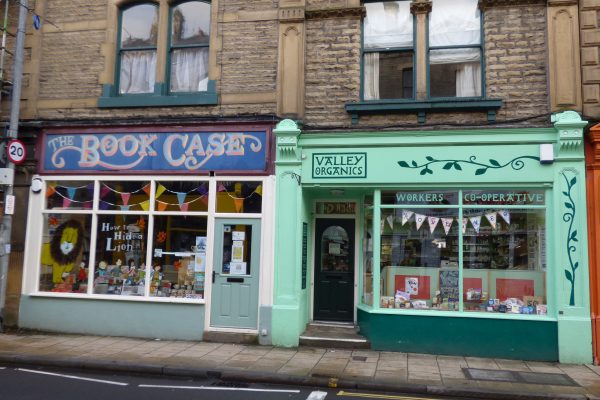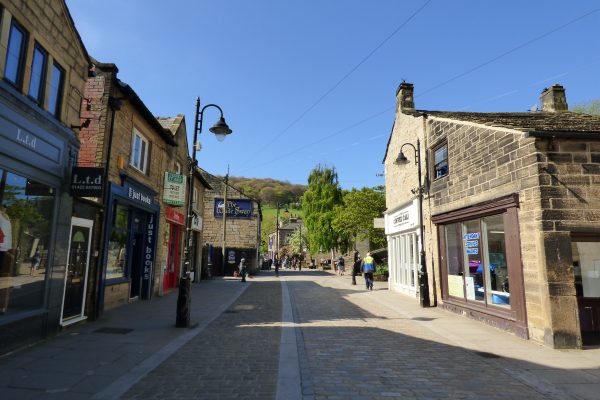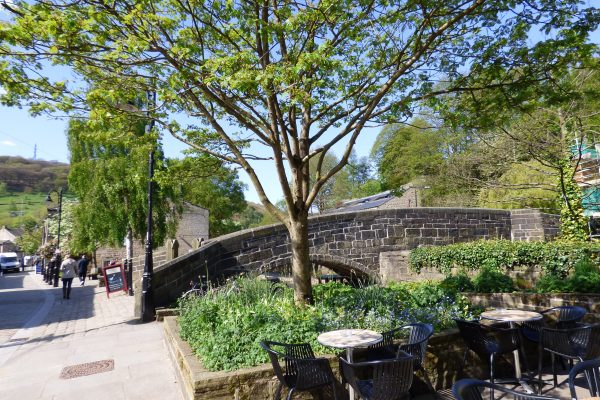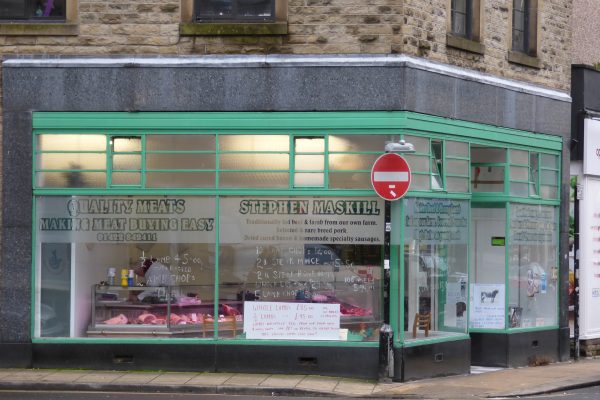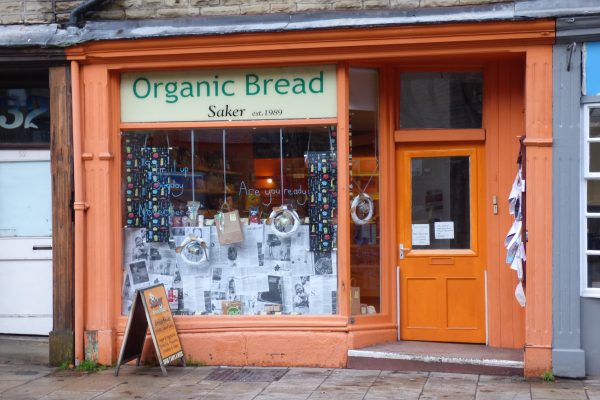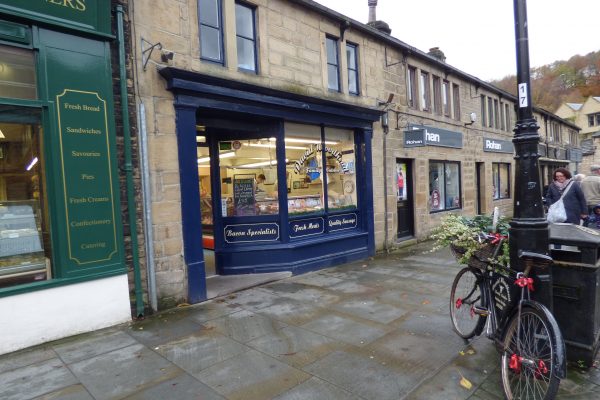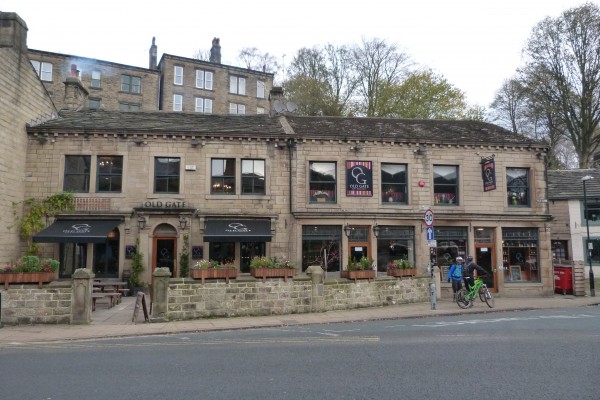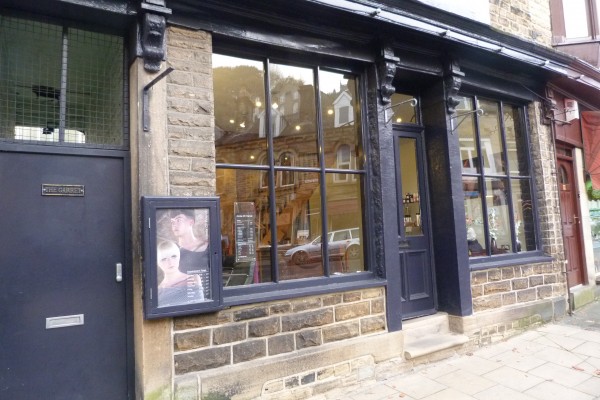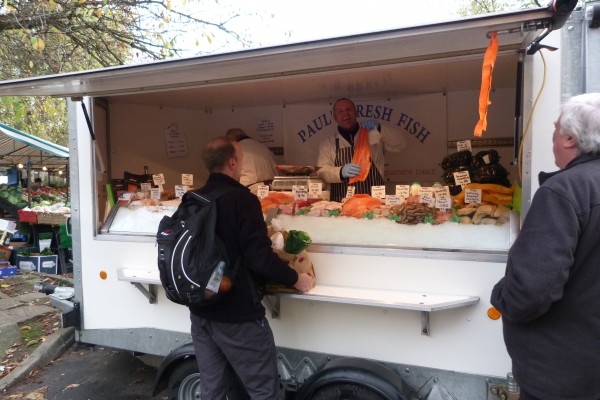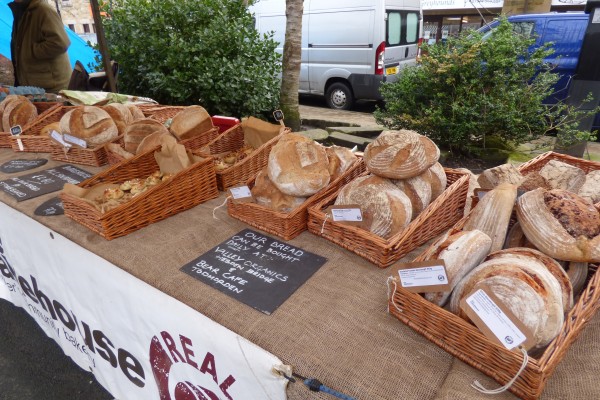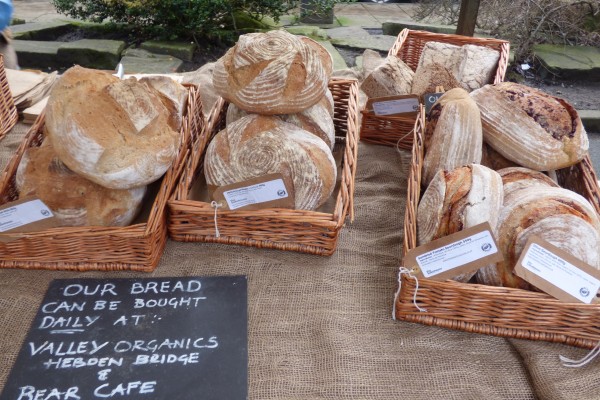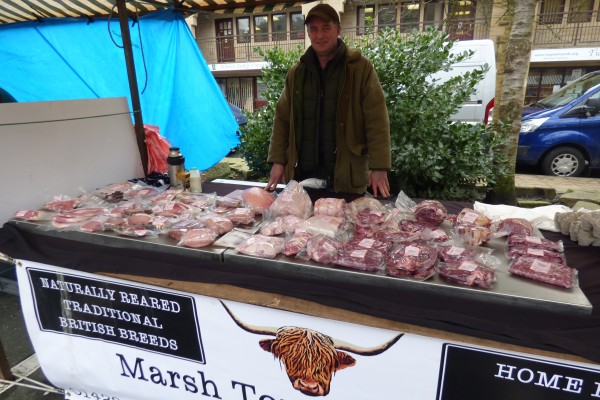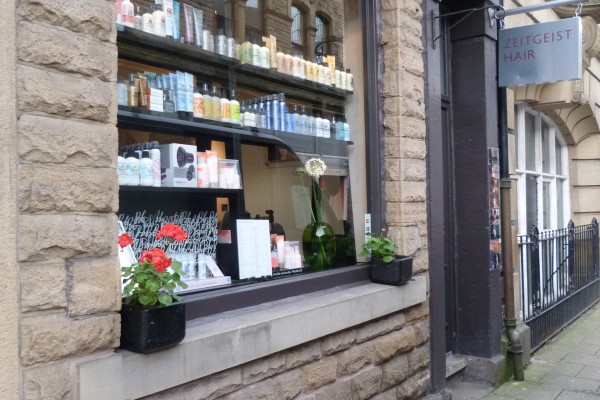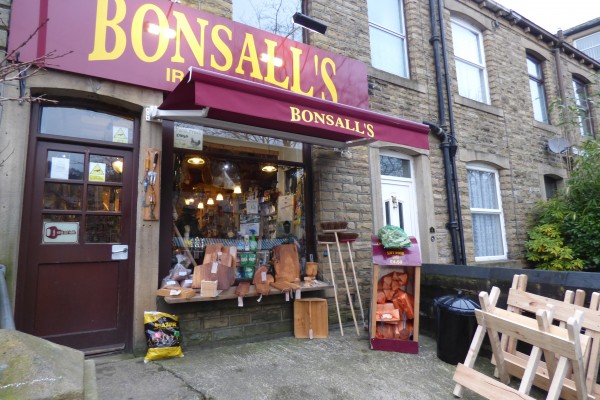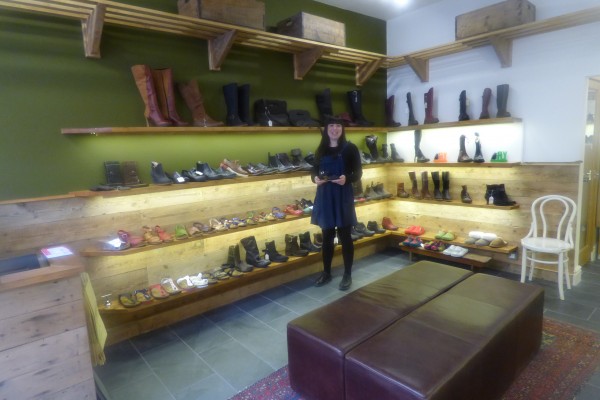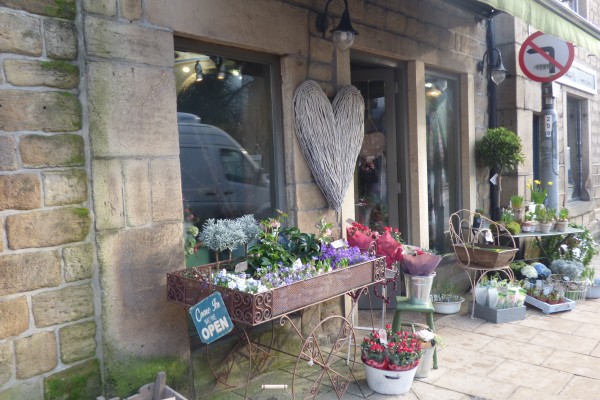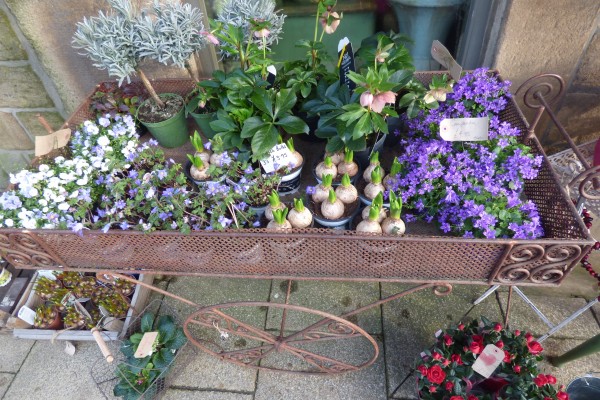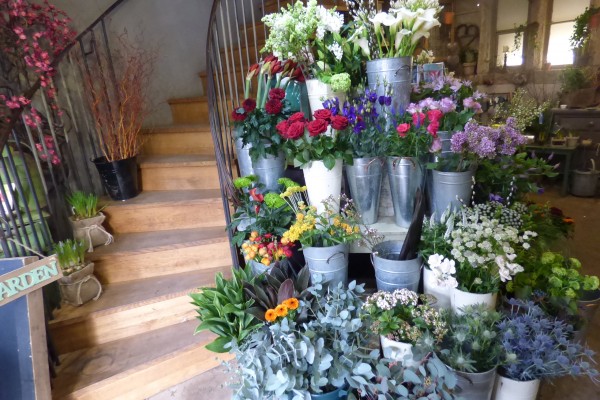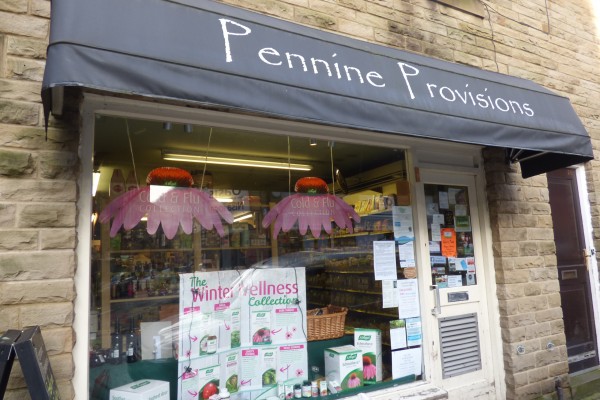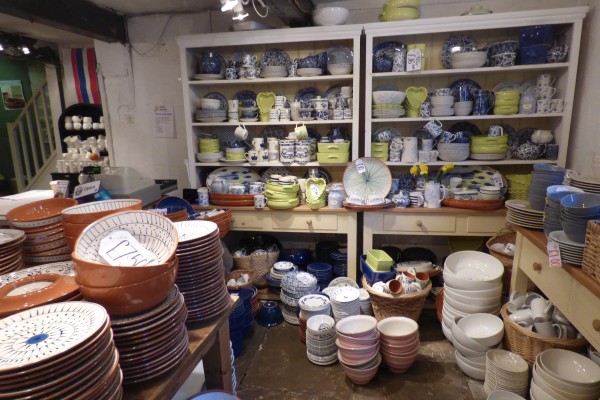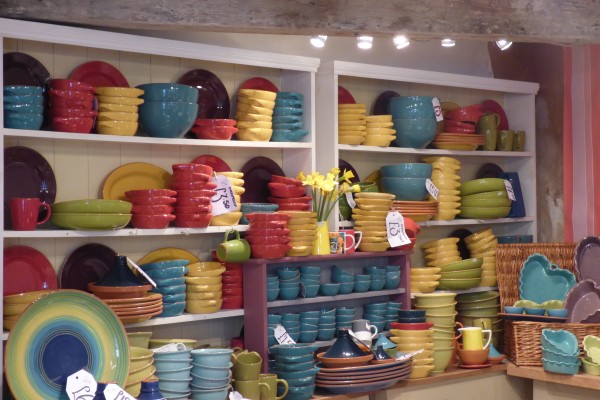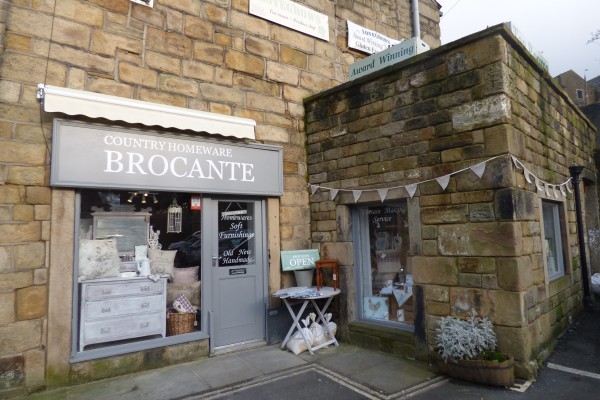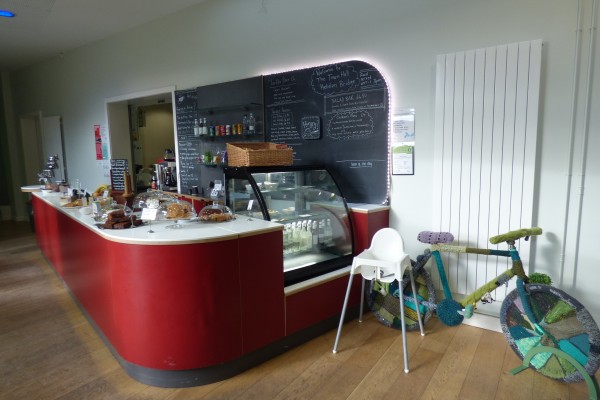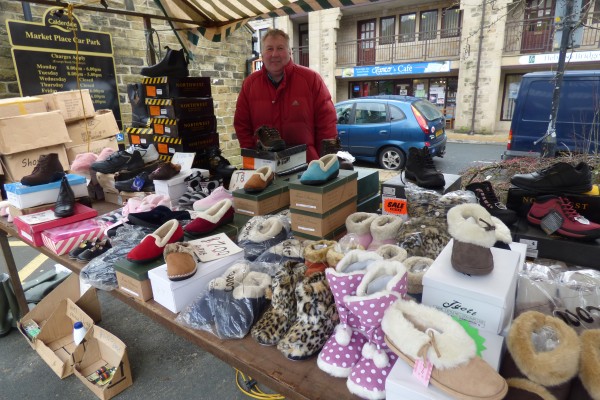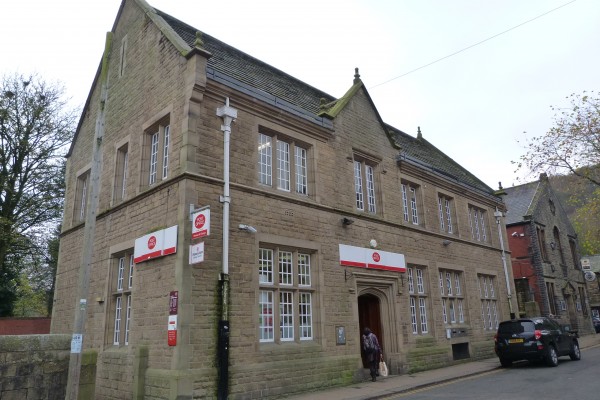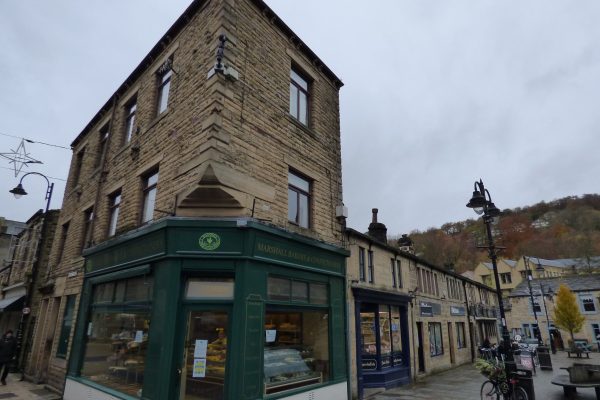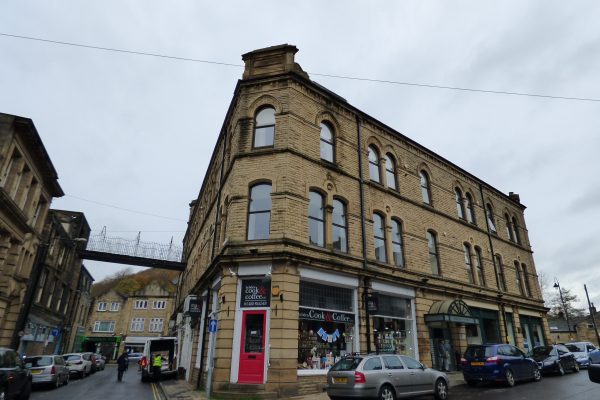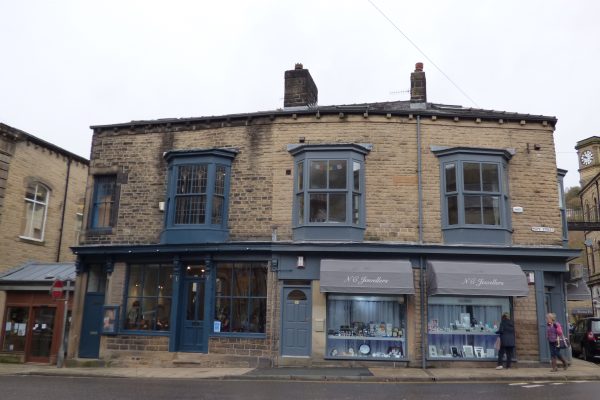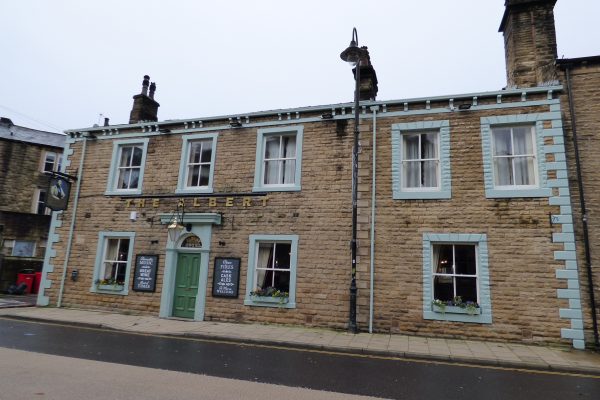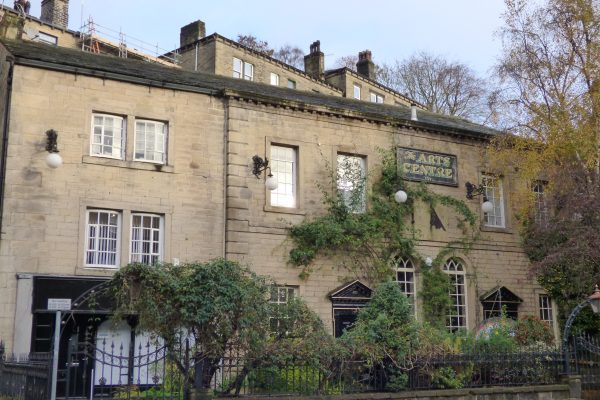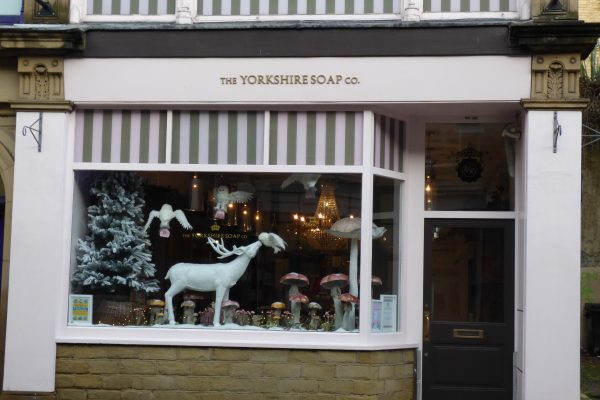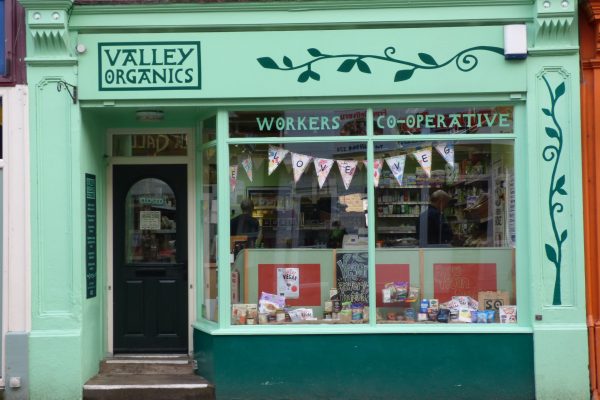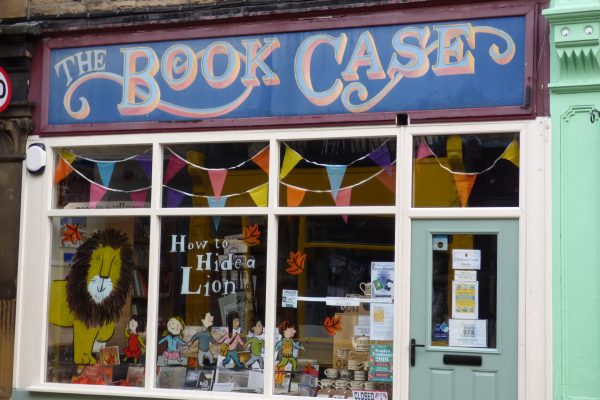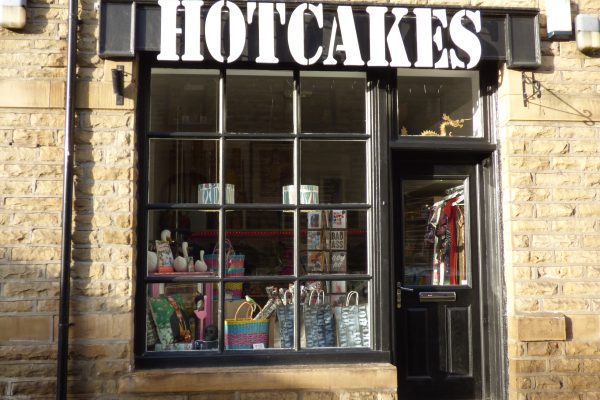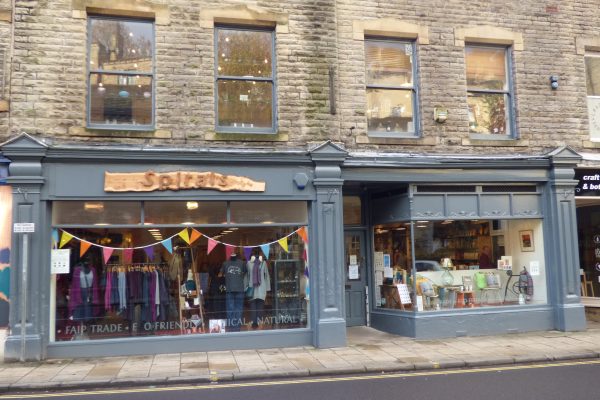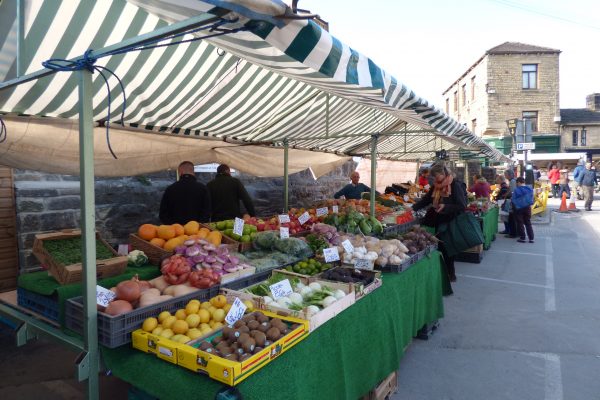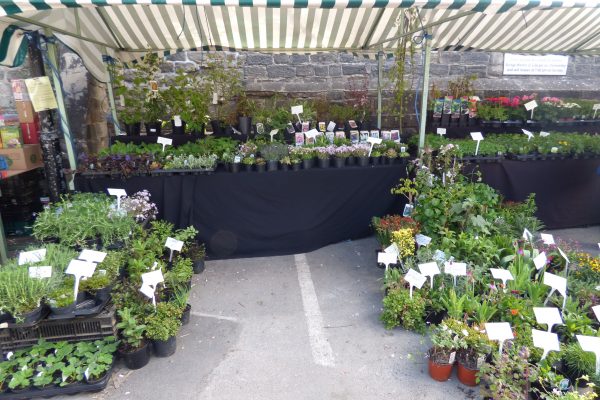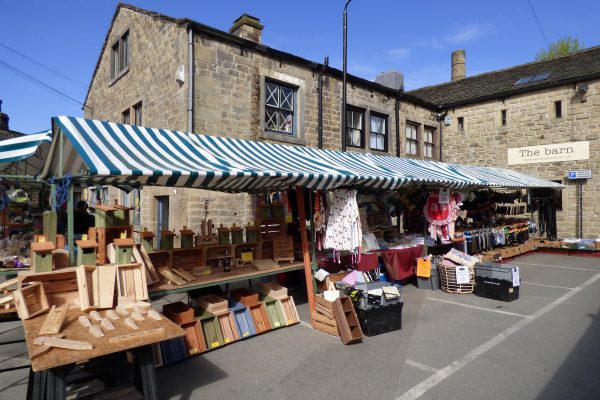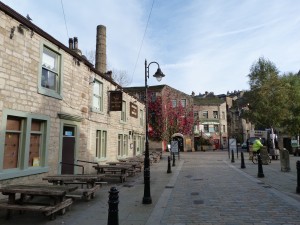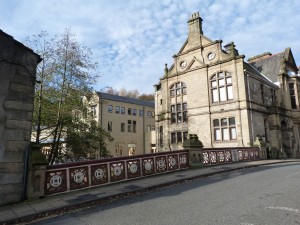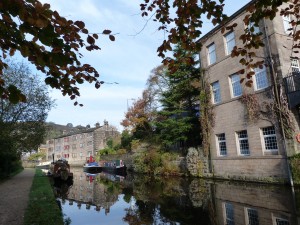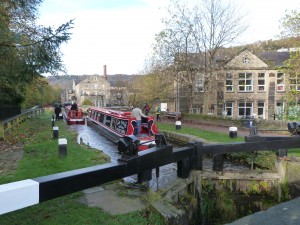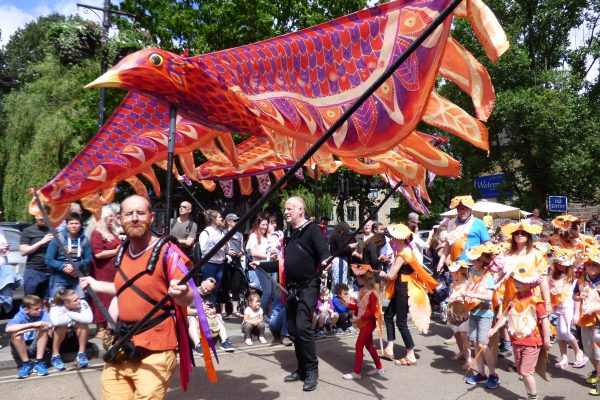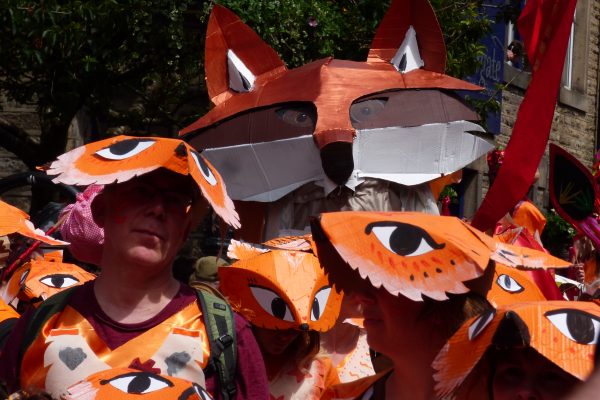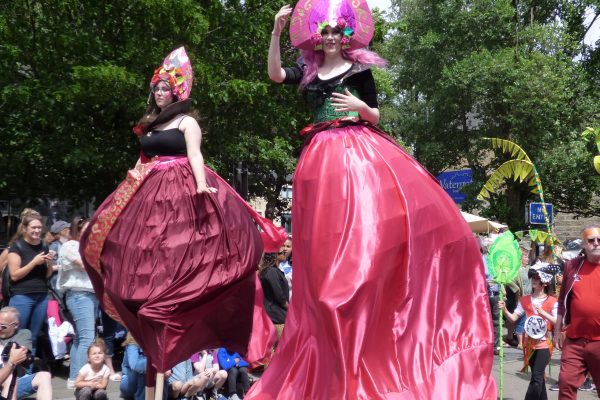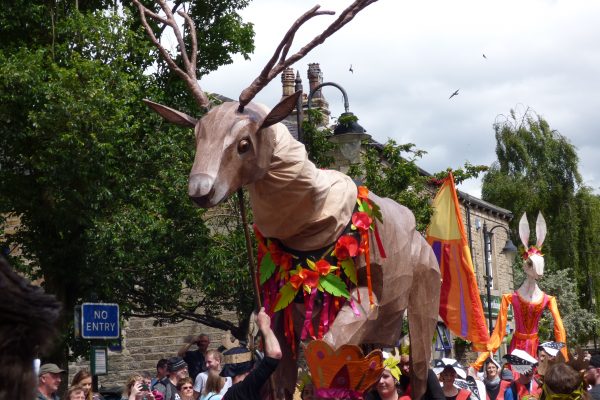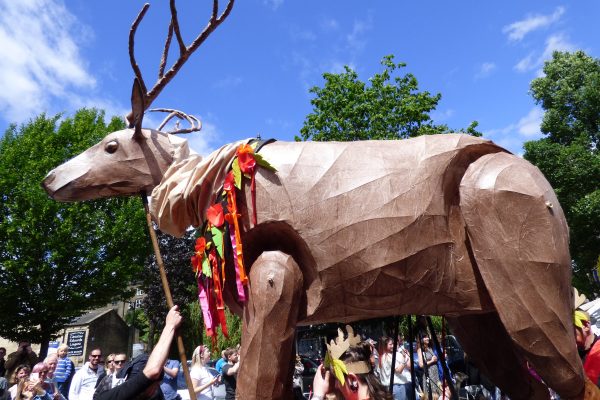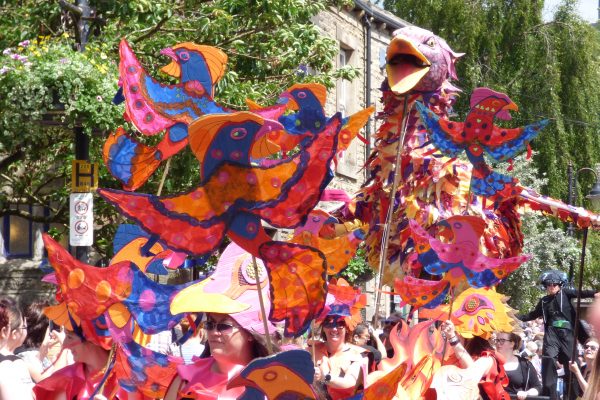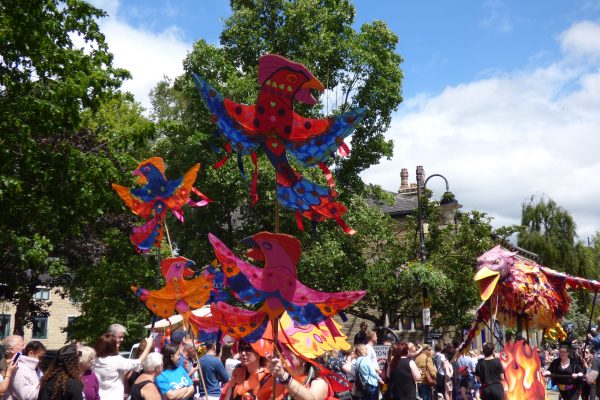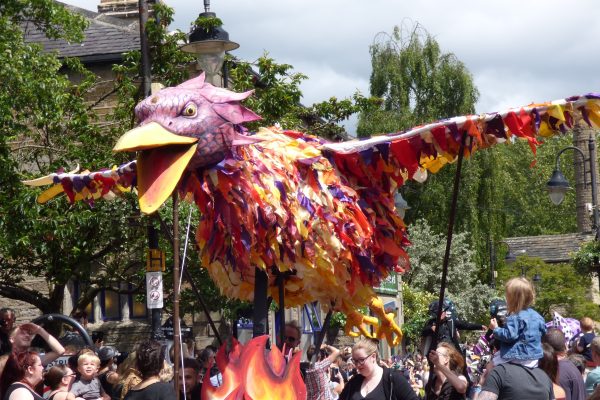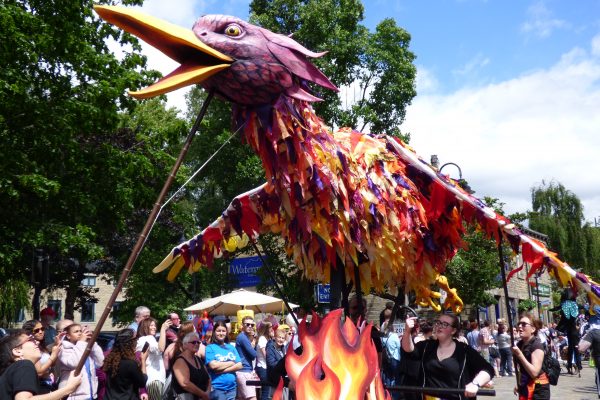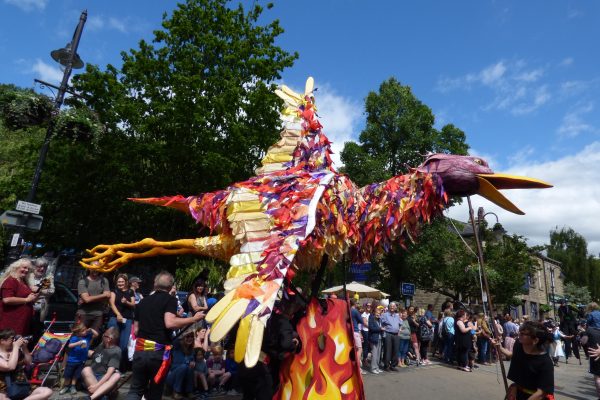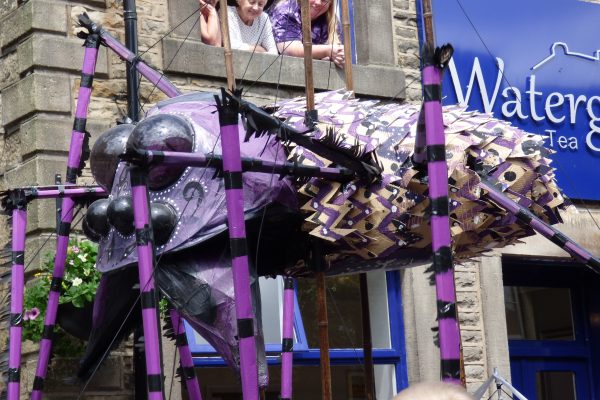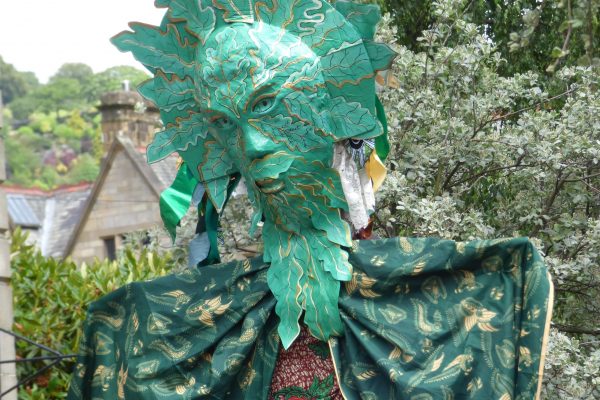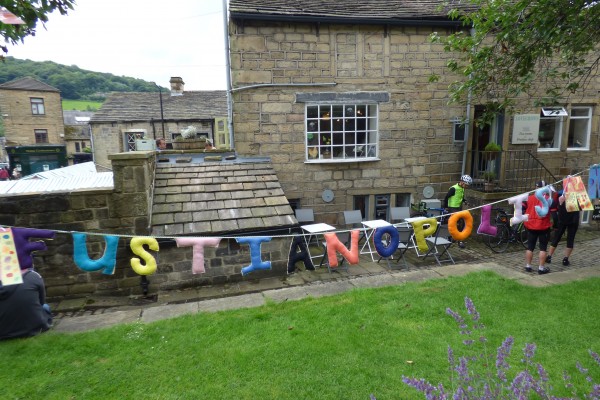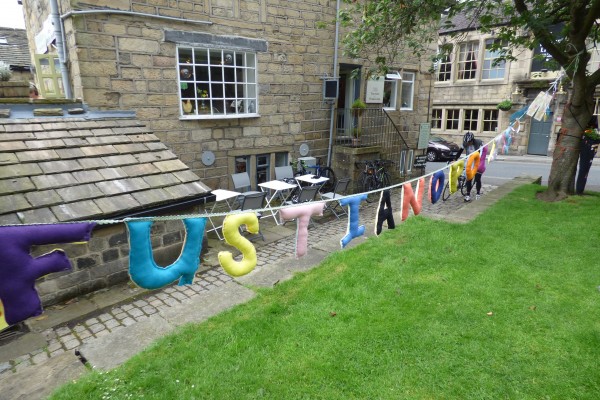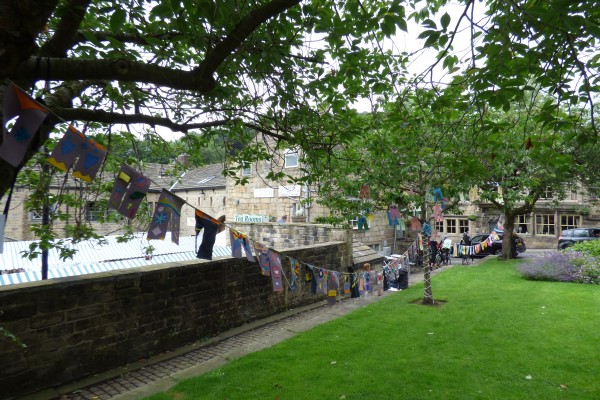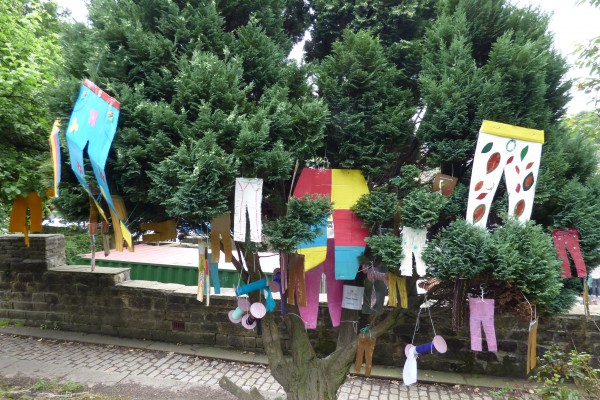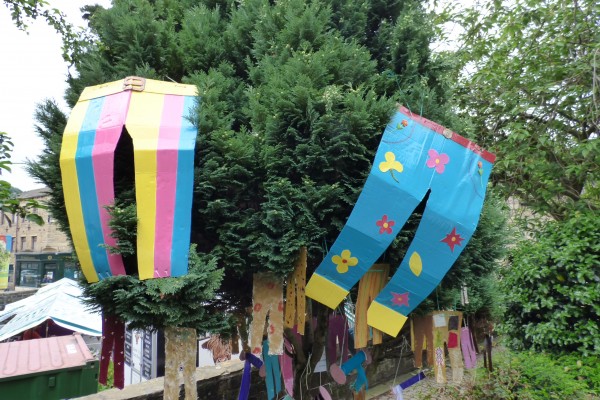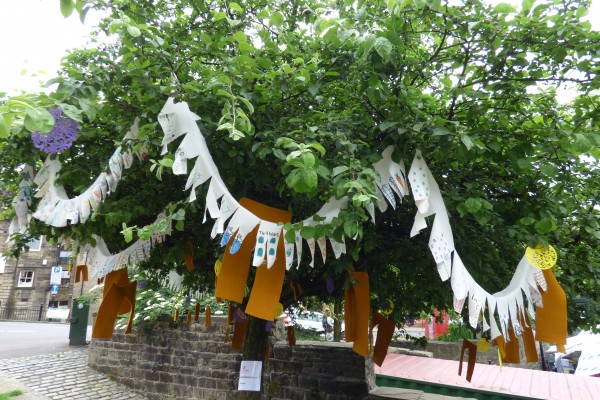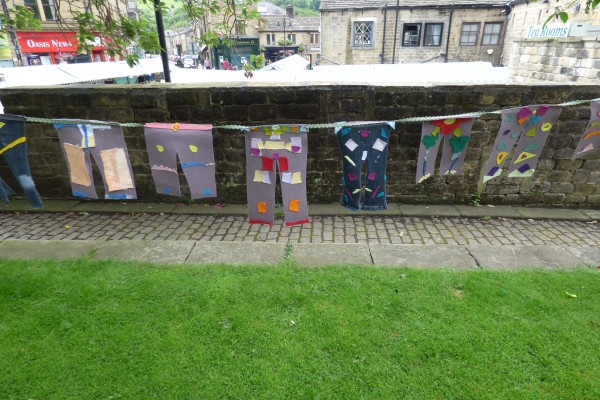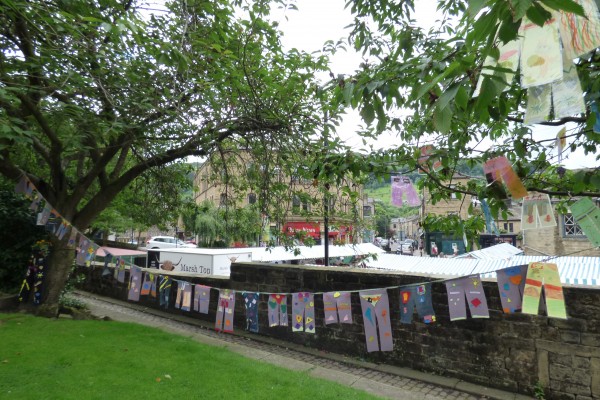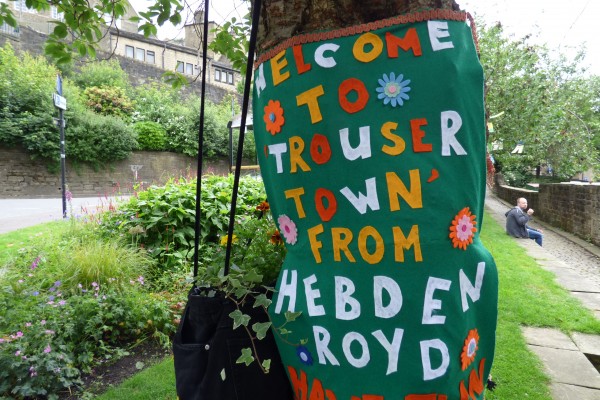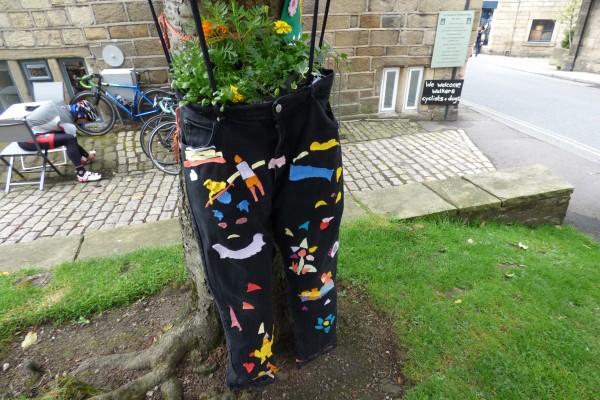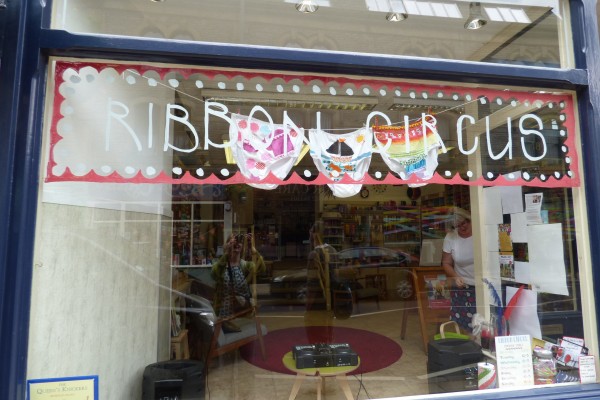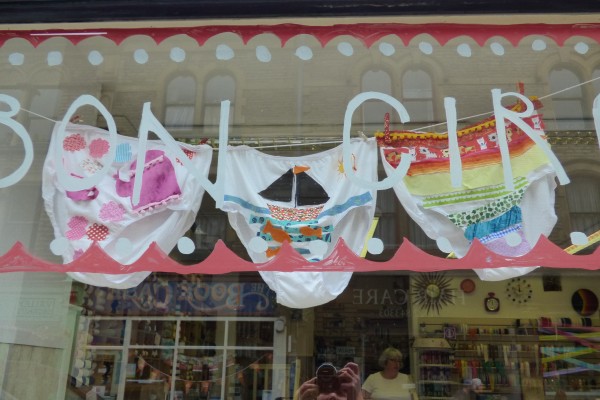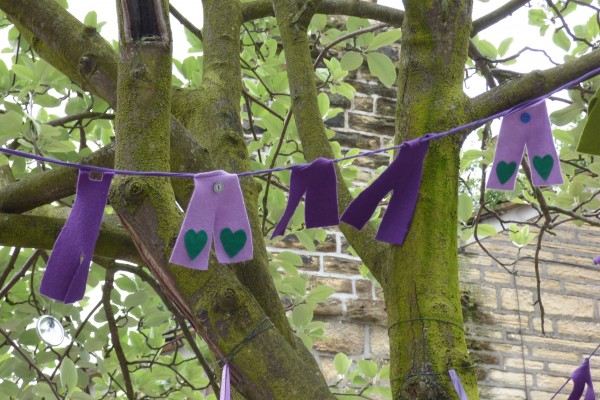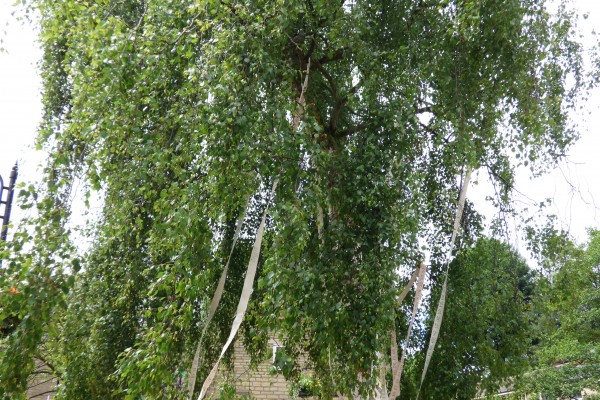Hebden Bridge – Creative, Quirky, Unique
Celebrated as the one of the funkiest towns on the planet, Hebden Bridge is both hip and happening and reassuringly down to earth. A magnet for creativity, Hebden Bridge is renowned for its quirkiness and has character in spades.
With its striking setting, distinctive architecture and vibrant local community, Hebden Bridge is an unforgettable place to visit. Built of sandy-coloured millstone grit, the tall narrow terraced houses cling to the winding contours of the steep-sided valley, as if the town has been carved out of the rocky landscape.
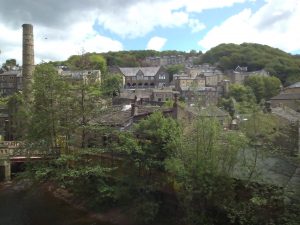
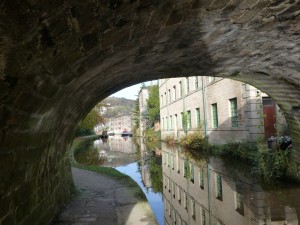
A 19th-century mill town developed during the industrial revolution, Hebden Bridge is now a hub of 21st century creativity. The mills specialised in corduroy and moleskin, known generically as fustian, which were used to make working men’s clothes. As well as weaving fustian cloth, garment-making was another important trade, hence the names ‘Trouser Town’ and ‘Fustianopolis’.
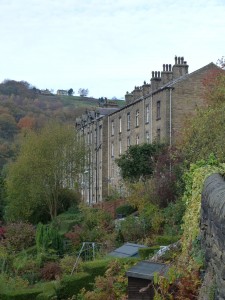
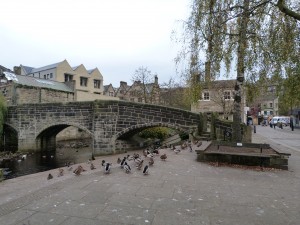
Following the decline of the textile industry, Hebden Bridge took on a new lease of life after being adopted by a community of hippies seeking an alternative lifestyle in the 1970s. Since then the town has continued to diversify and reinvent itself while retaining its authenticity. Independent-minded and resourceful, resilience is Hebden Bridge’s middle name.
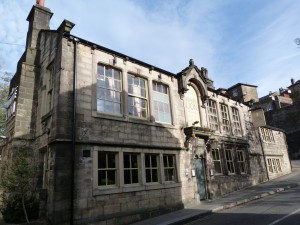
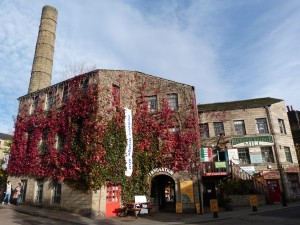
Winner of the Best Small Market Town in the Great British High Street Competition, Hebden Bridge has a higher ratio of independent retailers than almost anywhere in the UK. From butchers, bakers and soap-makers to jewellers, bike shops and milliners, Hebden Bridge is a quirky and vibrant place to shop.
A hub for designer-makers and creative entrepreneurs, Hebden is awash with tempting things to buy – from artisan bread and locally-reared beef and lamb to artists’ prints and vintage clothes.
Markets are held in St George’s Square four days a week. The Thursday food market is particularly good, with fresh fish from Fleetwood, delicious Lancashire cheese from Todmorden and artisan bread from Cragg Vale.
To refresh the palate there are lots of enticing cafes and restaurants, offering diverse cuisines from Turkish, Italian and Greek to Thai, Tibetan and Japanese. Needless to say, there are also plenty of friendly pubs and bars serving excellent local ales and craft beers.
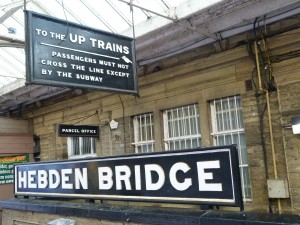
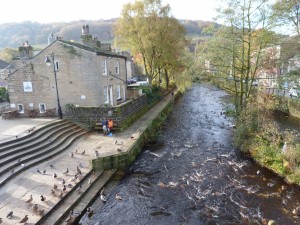
Being at the confluence of two rivers – Hebden Water and the River Calder – Hebden is a town of bridges, the oldest dating back to the 16th century. Hebden Bridge also straddles the Rochdale Canal, where colourful narrowboats are moored along the towpath. Even the Victorian railway station is full character with its historic fingerpost signage.
The marvellous countryside around Hebden Bridge offers a walker’s paradise, with literally hundreds of footpaths, bridleways and ancient packhorse tracks, including links to the Pennine Way.
Hebden Bridge Handmade Parade
Ten Fascinating Facts about Hebden Bridge
1. Hebden Bridge used to be known as Fustianopolis because many of its textile mills specialised in fustian – the generic name for corduroy and moleskin. Hebden Bridge has also been described as Trouser Town because it became an important centre for garment-making, especially working mens’ trousers made from fustian cloth.
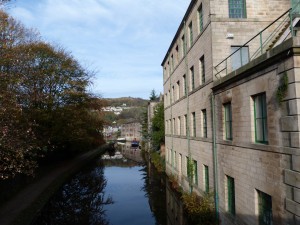
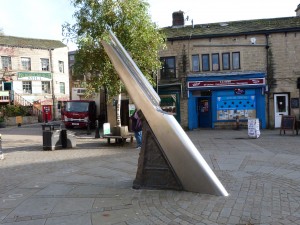
Left: Canalside mill in Hebden Bridge. Right: Fustian cutter’s blade sculpture in St George’s Square
2. Hebden Bridge was one of the earliest towns to embrace the Co-operative Movement, just a few years after the Rochdale Pioneers. The Hebden Bridge Fustian Manufacturing Society, based in Nutclough Mill, was the first co-operative mill in the UK. Community spirit and co-operative principles still characterise the town. Hebweb was the first community website in the UK.
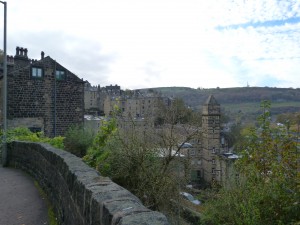
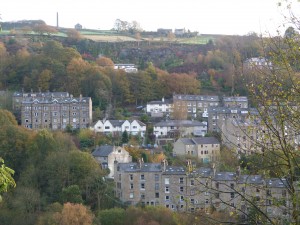
Left: Tower of Nutclough Mill. Right: Workers’ housing in Hebden Bridge
3. Until the 19th century Hebden Bridge was much smaller and more insignificant than Heptonstall, the small village on the top of the hill. Whereas Heptonstall had been a flourishing cloth-making centre for centuries, Hebden Bridge was little more than a bridging point over Hebden Water for packhorses en route to Heptonstall via the Buttress (an incredibly steep stone-paved track). But following the industrial revolution, everything changed. Hebden Bridge expanded rapidly and the Calder Valley became a hub for large water-powered and steam-powered textile factories.
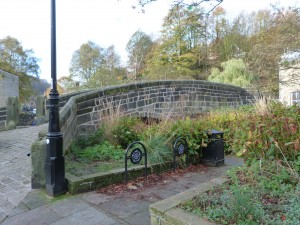
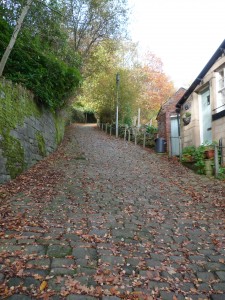
Left: 16th century bridge crossing Hebden Water. Right: The Buttress
4. Because the Upper Calder Valley is so steep-sided, there’s very little space on the valley bottom for housing. When Hebden Bridge expanded during the 19th century, double-decker terraces were developed, consisting of underdwellings and overdwellings, running along the contours of the valley and up and down the slopes. ‘Flying freeholds’ – another Hebden Bridge novelty – were introduced as a result.

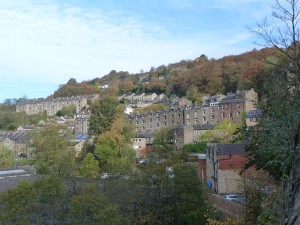
Double-decker terraces in Hebden Bridge
5. Hebden Bridge boasts one of the highest proportion of independent shops per capita in the country, combining traditional businesses, such as ironmongers, haberdashers and and florists, with milliners, jewellers and organic food. It’s no surprise that Hebden Bridge was championed Best Small Market Town in the Great British High Street Awards in 2016.
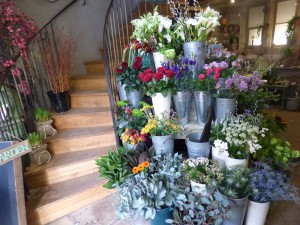
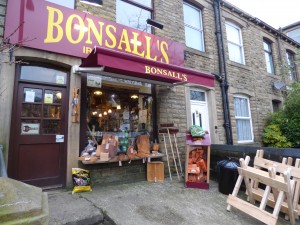
Independent shops in Hebden Bridge
6. Hebden Bridge’s thriving food and general market, held each Thursday, won the national award for Best Small Outdoor Market. It sells everything from fresh fish, local cheese and sourdough bread to toiletries, plants and fruit and veg. Hebden Bridge also has a flea market each Friday, an artisan’s market on Saturday and a local produce market on Sunday.
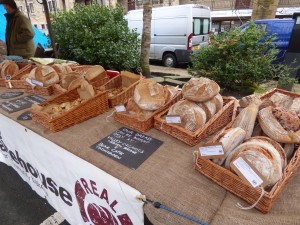
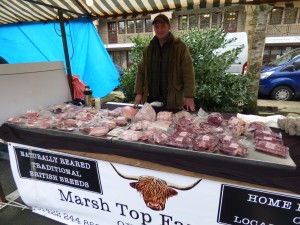
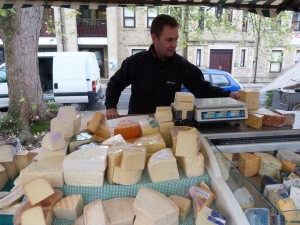
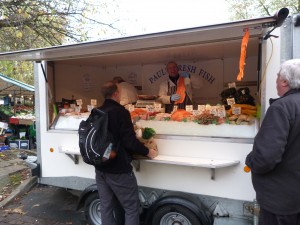
Hebden Bridge Market
7. Mytholmroyd-born poet Ted Hughes retained life-long connections with Hebden Bridge. His book Remains of Elmet (1979), a collaboration with photographer Fay Godwin, is all about the Upper Calder Valley. Hughes’s parents lived in a house called The Beacon at Slack, near Heptonstall. His wife, the American poet and novelist Sylvia Plath, author of Ariel and The Bell Jar, is buried in Heptonstall Churchyard. Lumb Bank, an 18th century millowner’s house in Colden Clough formerly owned by Ted Hughes, is now a flourishing creative writing centre run by the Arvon Foundation.

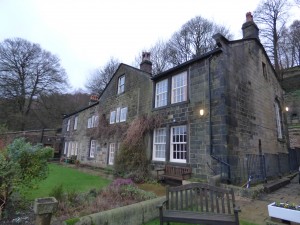
Left: Remains of Elmet. Right: Lumb Bank
8. Internationally renowned photographer Martin Parr lived and worked in Hebden Bridge during the mid 1970s at the start of his career. His photographs from this period, focusing on the non-conformist chapels that once dominated this area, were recently published in a book called The Non-Conformists.
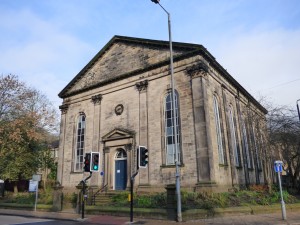
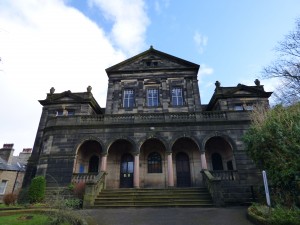
Left: Hope Chapel, Hebden Bridge. Right: Birchcliffe Chapel, Hebden Bridge
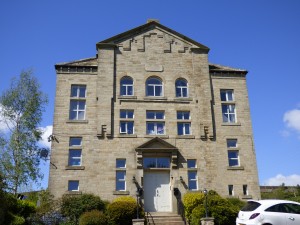
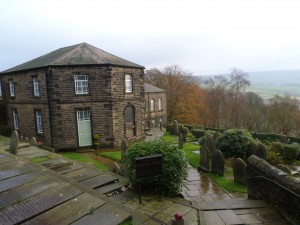
Left: Providence Chapel, Midgley. Right: Heptonstall Methodist Chapel
9. World-famous singer songwriter Ed Sheeran spent his formative early childhood years in Hebden Bridge and seems to have absorbed its quirky, independent spirit. His parents lived in a house on Birchcliffe Road in Hebden Bridge at the time. Ed’s father was a curator at Cartwright Hall in Bradford and his mother worked at Manchester City Art Gallery.
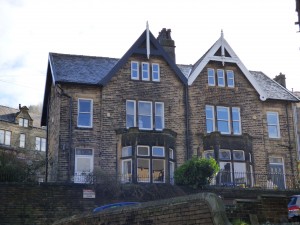
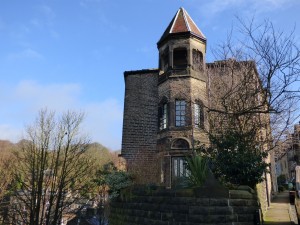
Left: West Royd (left), Ed Sheeran’s early childhood home on Birchcliffe Road, Hebden Bridge. Right: Eiffel Tower opposite West Royd
10. Hebden Bridge and the Calder Valley are popular locations for film and TV dramas, both historical and contemporary. The picturesque village of Heptonstall appeared in Jericho and Swallows and Amazons, while Holdsworth House, a 17th century house in Halifax, was a key location in Last Tango in Halifax. Hebden Bridge features prominently in Happy Valley, which, like Last Tango, was written by BAFTA award-winning screenwriter Sally Wainwright, who grew up in Calderdale. Her latest series Gentleman Jack, set in nearby Halifax, also features the distinctive architecture and landscape of this area.
